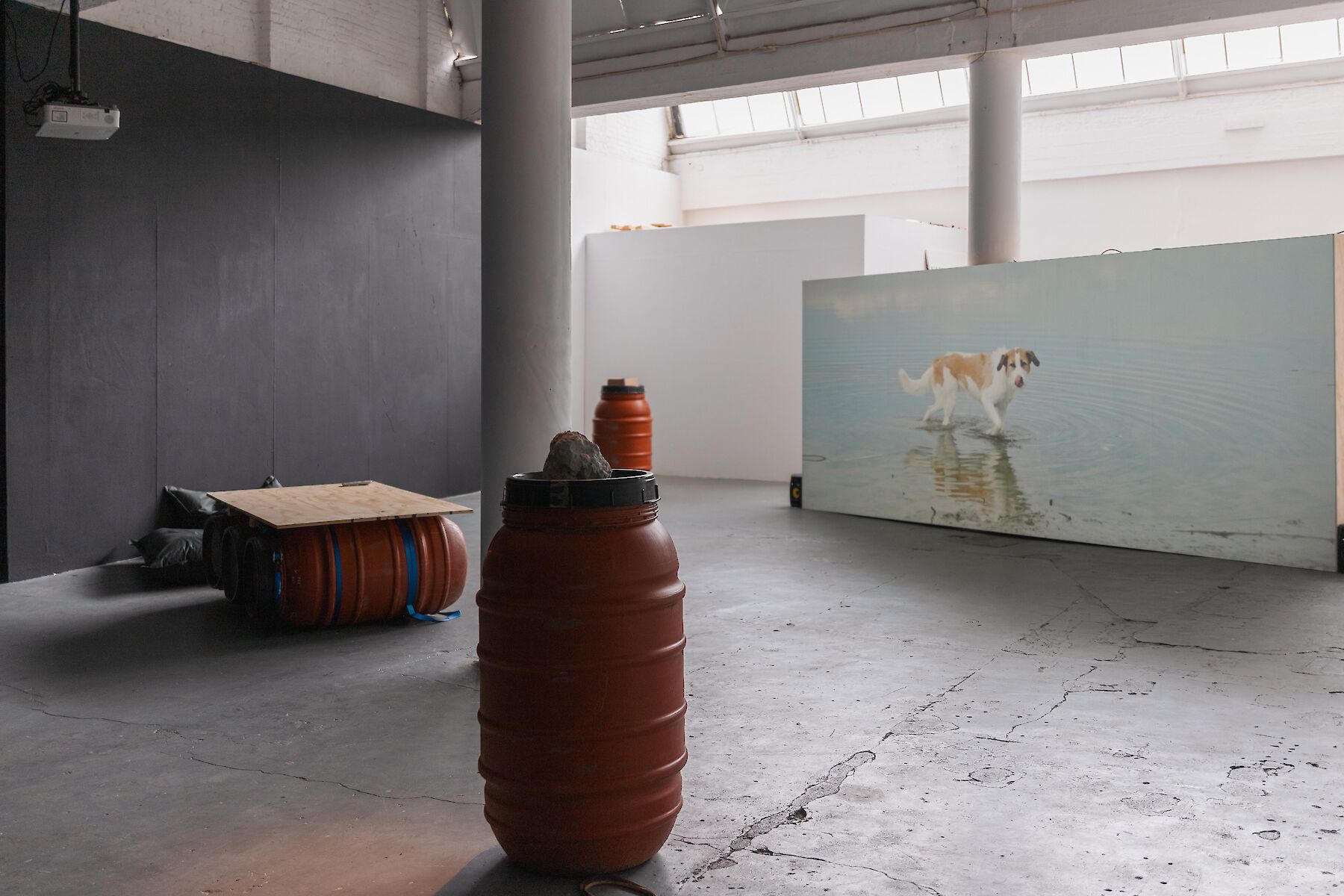
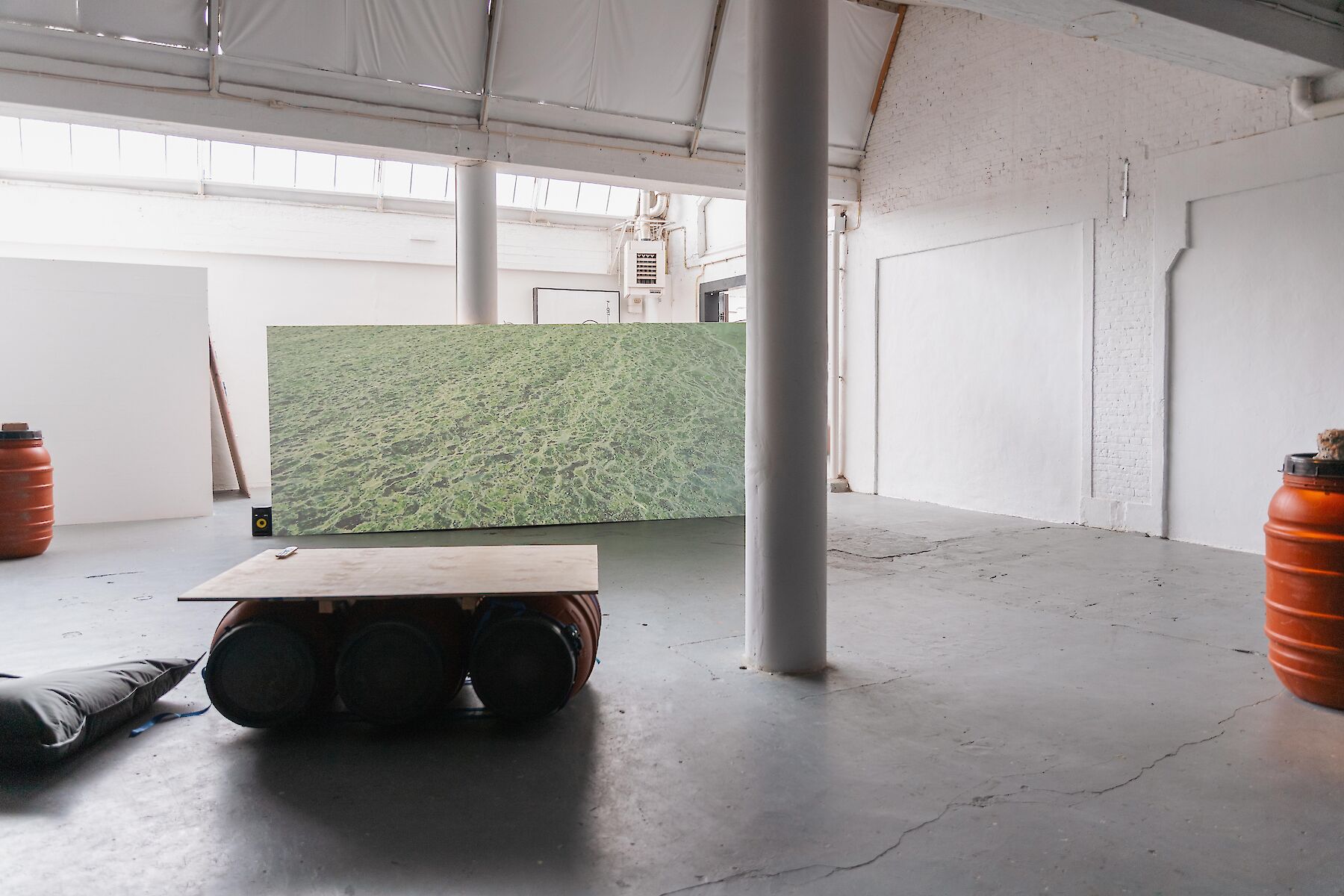
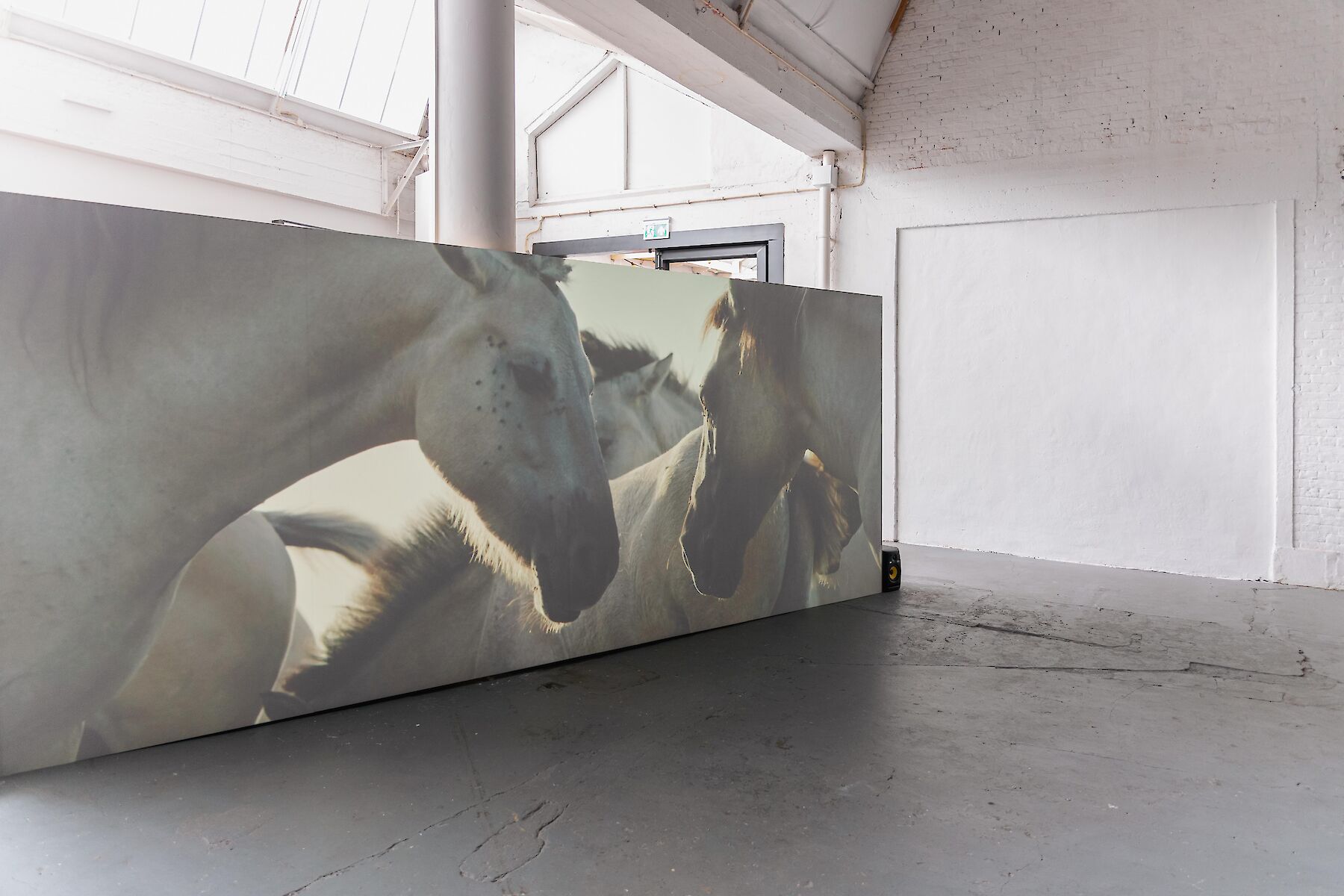
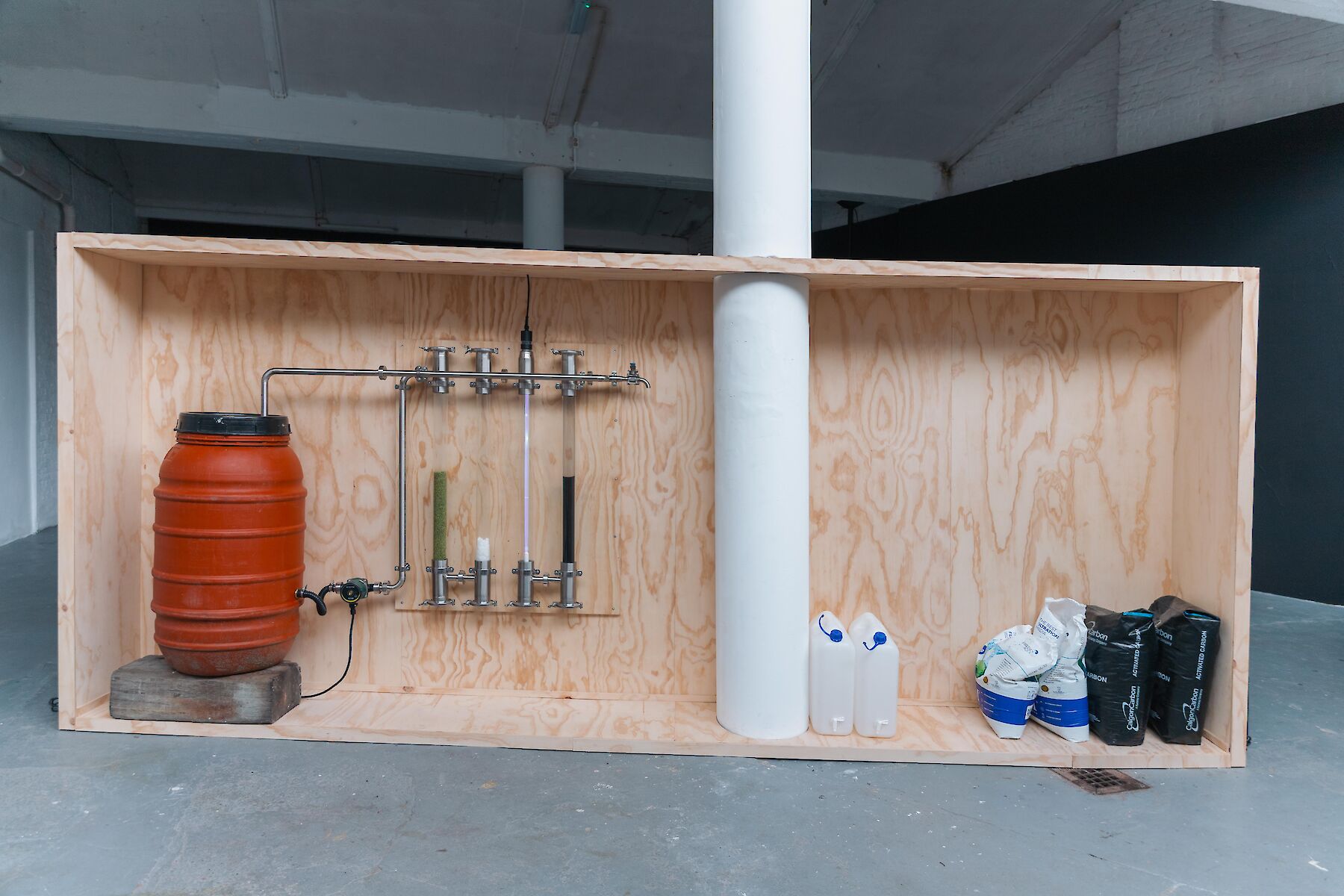
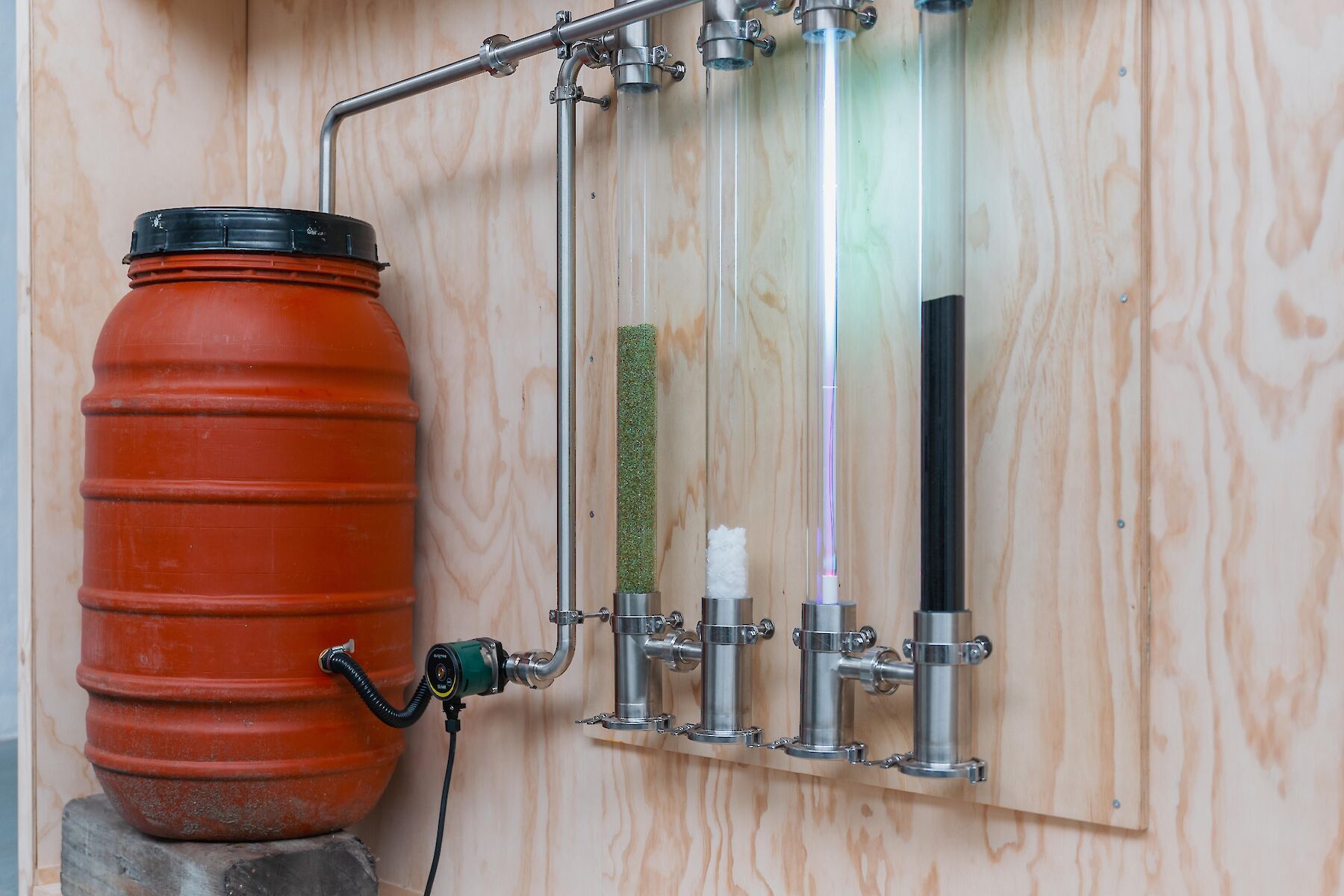
What are the ecological consequences of dumping contaminated soil into public water? And can toxicity lead to new nature? These questions are central to Fragments from Shallow Lake. The solo exhibition features fragments of my forthcoming film Shallow Lake. The combination of these fragments offers the visitor the different perspectives that are discussed in the film, but at the same time it also gives an insight into the editing process of the film. Shallow Lake was developed in collaboration with production agency VRIZA.
In both the film and the exhibition, attention is paid to the contradictory nature of deep sand extraction lakes in the Meuse and Waal area. For decades these lakes have been filled with contaminated soil in order to create new nature reserves. This “new nature” is an industrial wilderness, a composite of exotics. Genetically modified primeval cows graze on polluted soil, rock powder from Scotland swirls in deep lakes, PFAS accumulate in toxic sludge. And all these elements form the territory of the beaver and special flora. But what is the impact of these toxic substances on the flora and fauna of these areas? And how can we deal with pollution?
Behind thhe projection screen a waterfilter with modern techniques filters water from the contaminated lakes.
Curated by: Youri Appelo
In collaboration with VRIZA
Camera: Casper Brink
Sound: Malu Peeters
With the support of: De Korte Verbeelding (a collaboration of Mondriaan Fund and Netherlands Film Fund), Amsterdam Fund for the Arts, Prins Bernard Cultuurfonds Gelderland van Remmen UV techniek
Photo's by: Robin Wagenaar
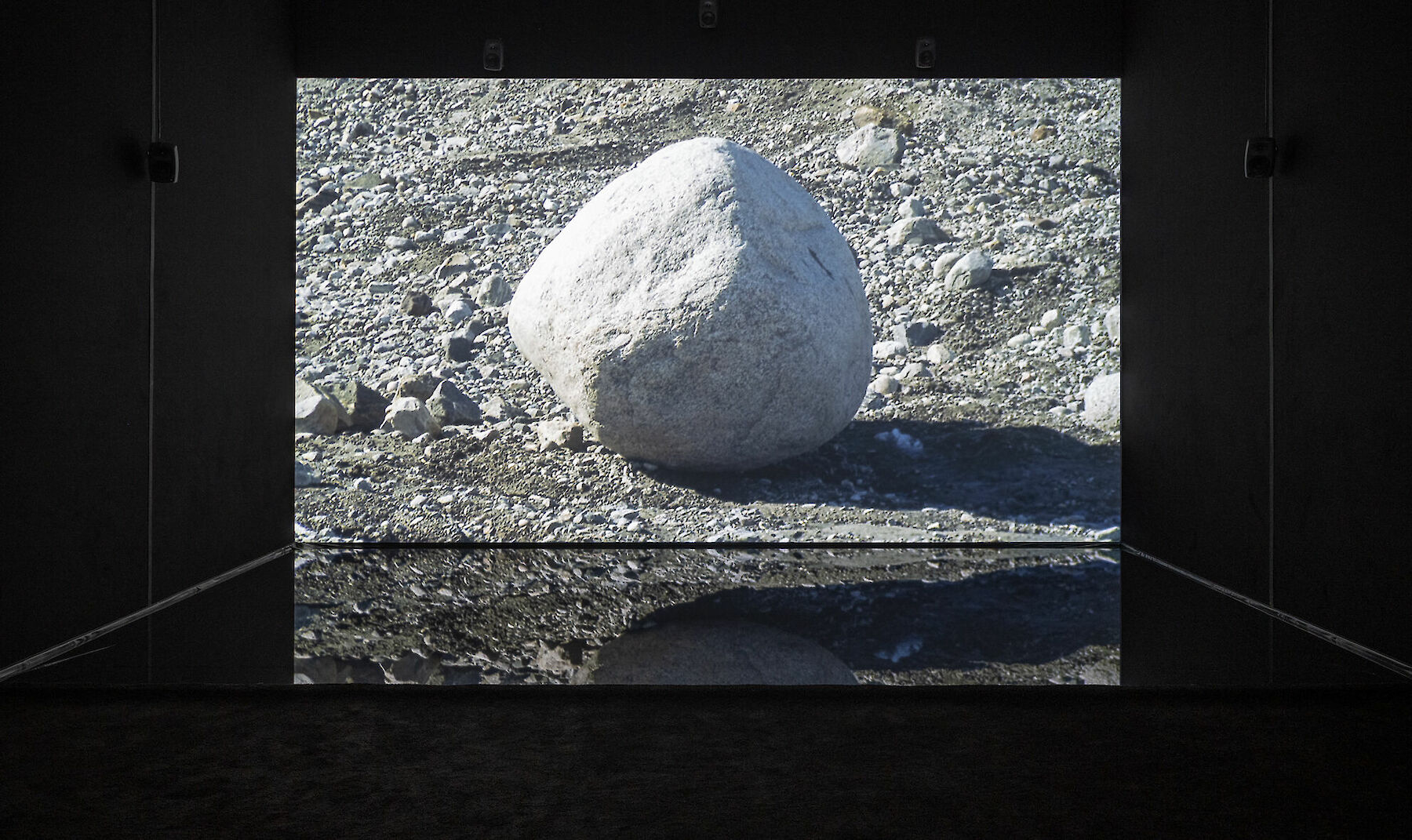
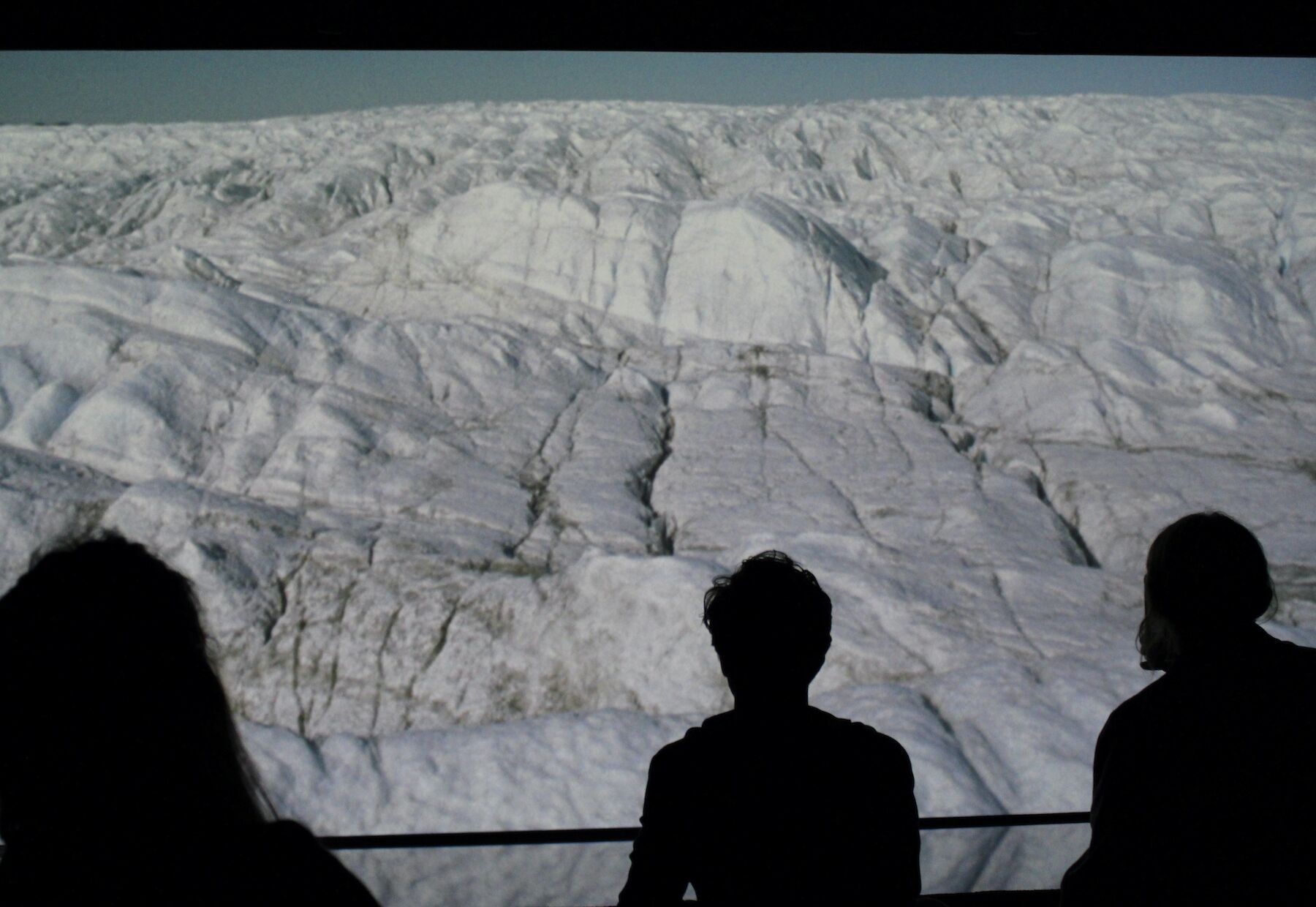
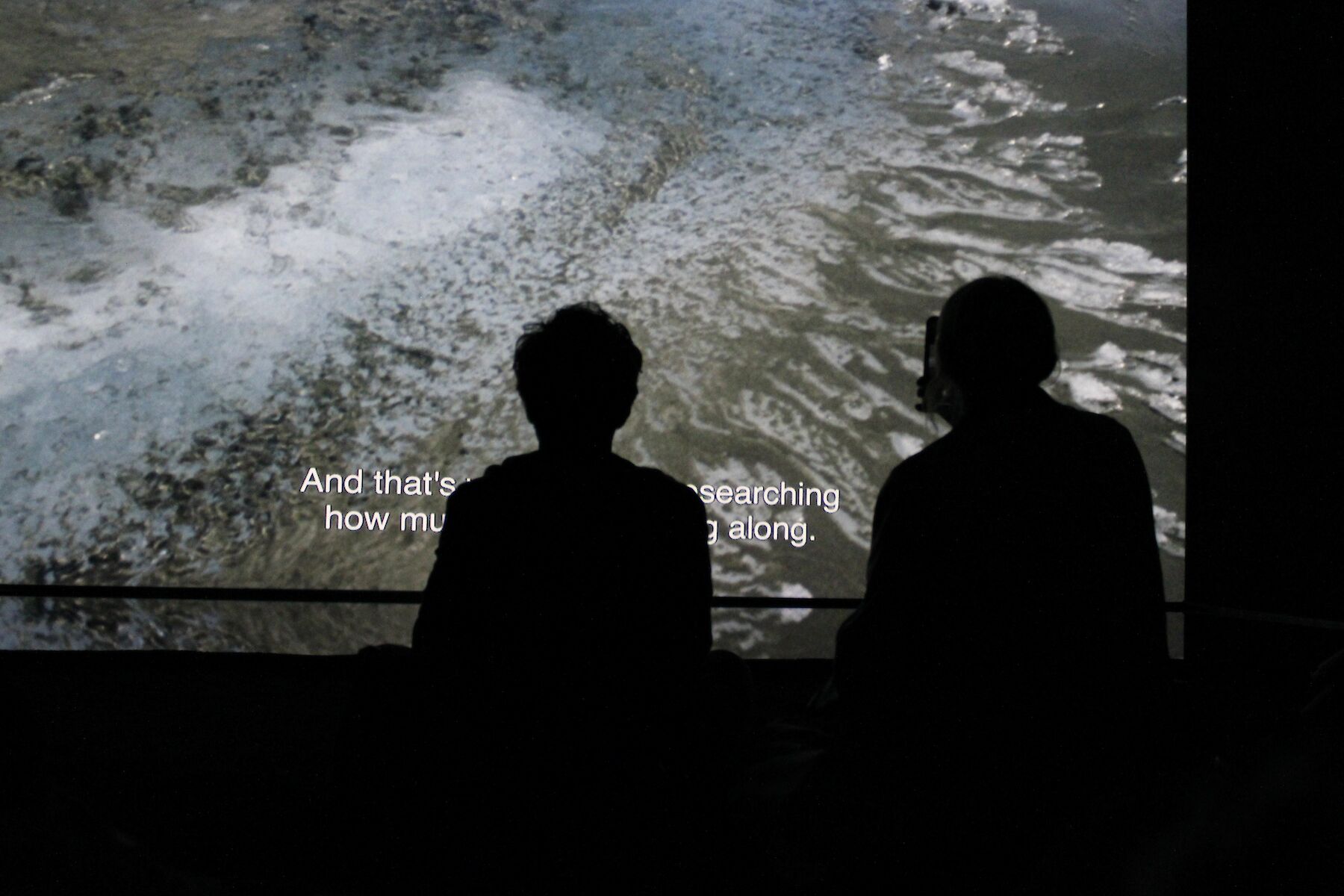
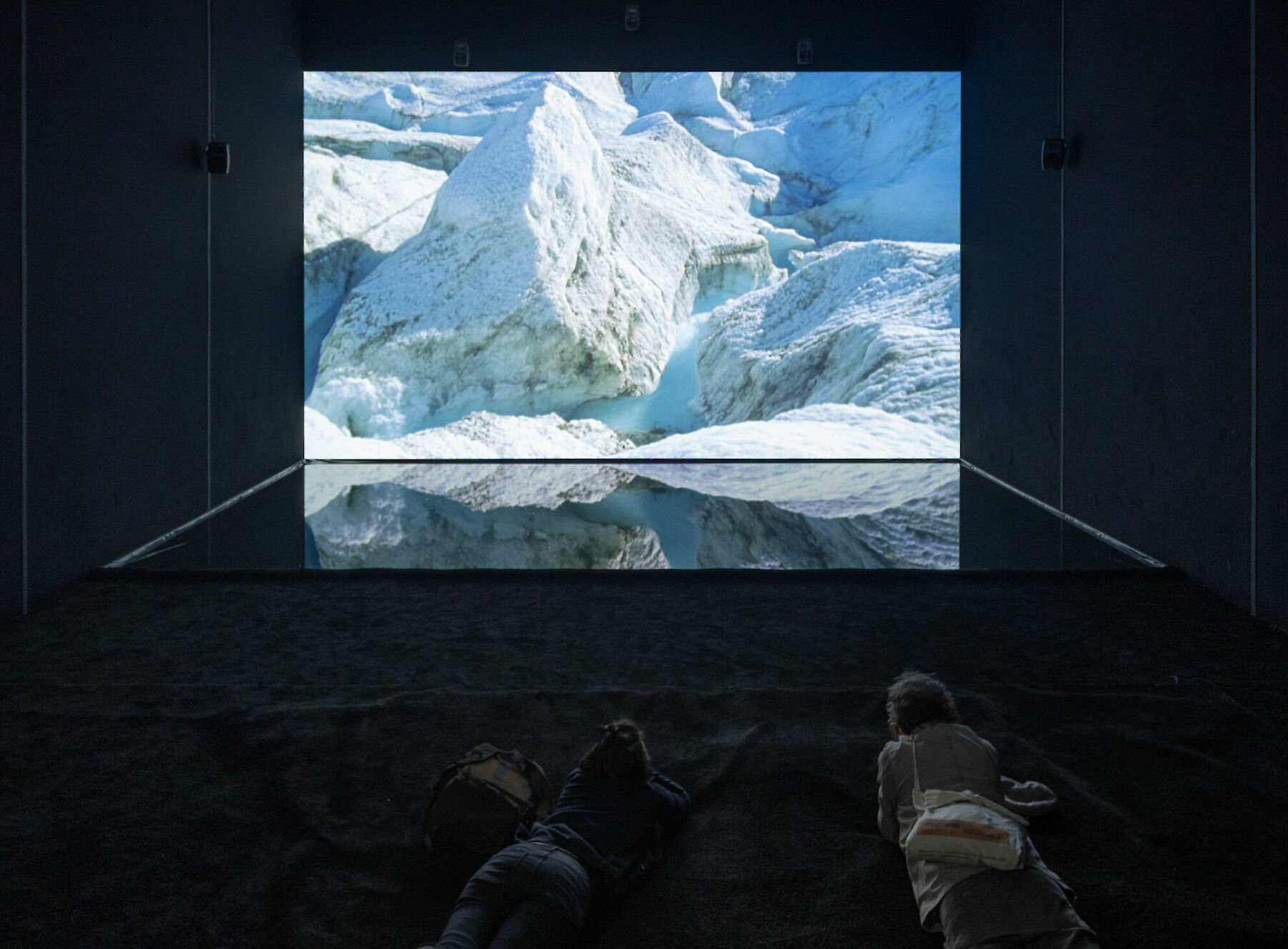
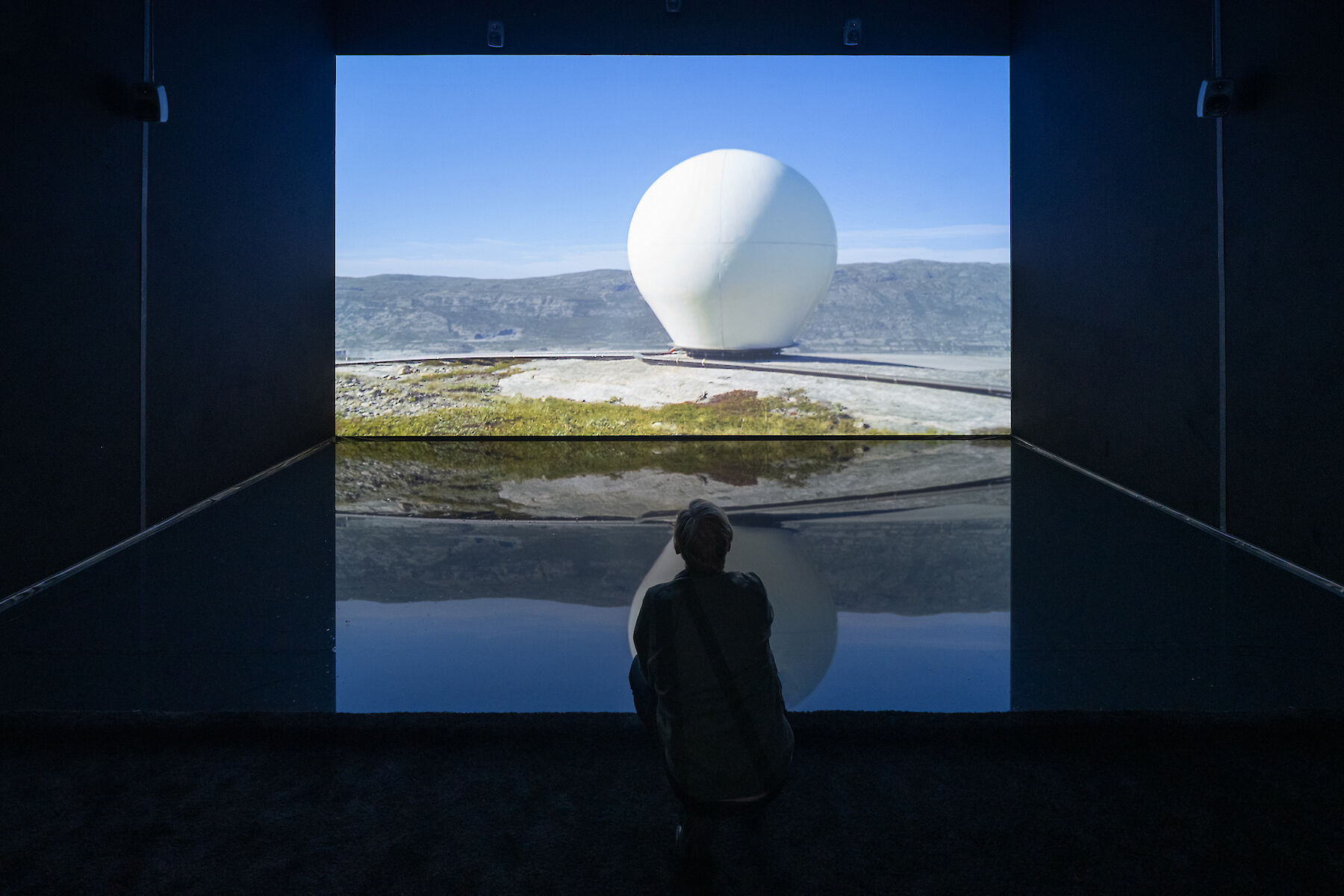
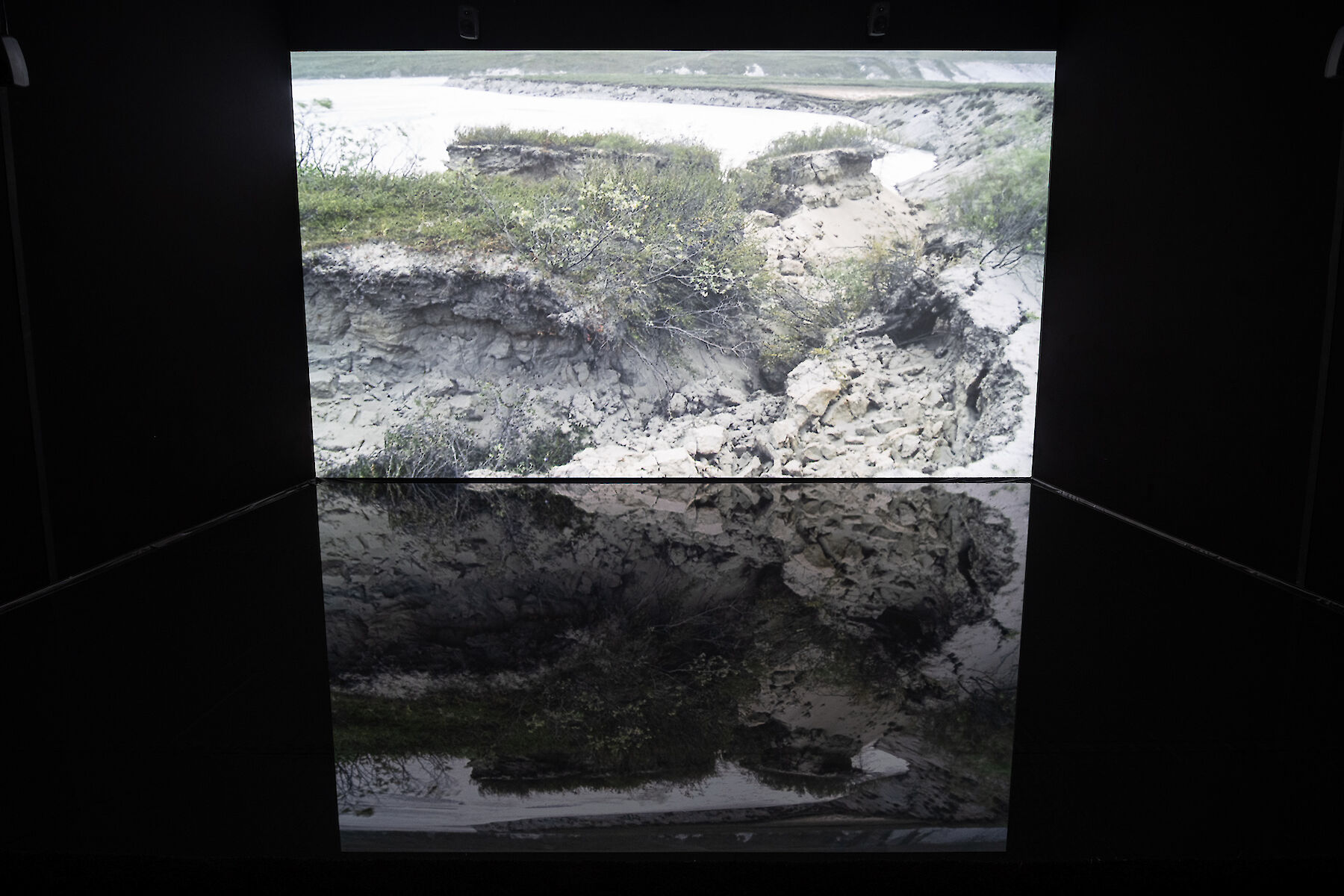
Marraq is the Greenlandic word for the mud that flows through the landscape in increasing quantities as the ice melts. Filmed analogously on 16 mm, image and sound let the changing landscape speak for itself. The camera records how diverse life forms all have their own way of populating the earth.
The audio-visual installation, developed in collaboration with sound-artist Malu Peeters, allows three protagonists to speak. First of all, the landscape itself. The crystal-clear water that makes its way down through the channels in the glacier; a large boulder that has deposited itself at the edge of a mud stream; the overwhelming force with which a waterfall clatters against the rocks; or the dry dust that blows up along the riverbeds – the landscape tells us in plain language what transformations it is undergoing due to climate change.
Greenlandic guide Adam Lyberth explains how the melting of ice caps due to rising temperatures releases mud that deposits in the banks of the river. This mud, abundant in Greenland, turns out to be so fertile that it was shipped to Brazil to restore the depleted soil. Marraq suggests that adverse effects of climate change can also bring positive solutions, as long as they are handled carefully based on knowledge and an intrinsic understanding of the landscape.
Finally, we meet a third protagonist in the form of a raven, who calls to us from his flight. In the Inuit culture, to which guide Lyberth is also related, the raven stands at the beginning of all life. Everything comes from darkness, the raven is the first to break free from the dark universe and give life to all other beings. Like a mother around her offspring, she seems to watch over the changing landscape.
Camera: Onno Petersen
Sound: Malu Peeters
Voice: Adam Lyberth
Edit: Jasper Coppes
With many thanks to Aka Hansen (Uilu Stories), Lonnie van Brummelen (Vriza) and Dario Giustarini (Azimuth)
Documentation by: Cassander Eeftinck Schattenkerk
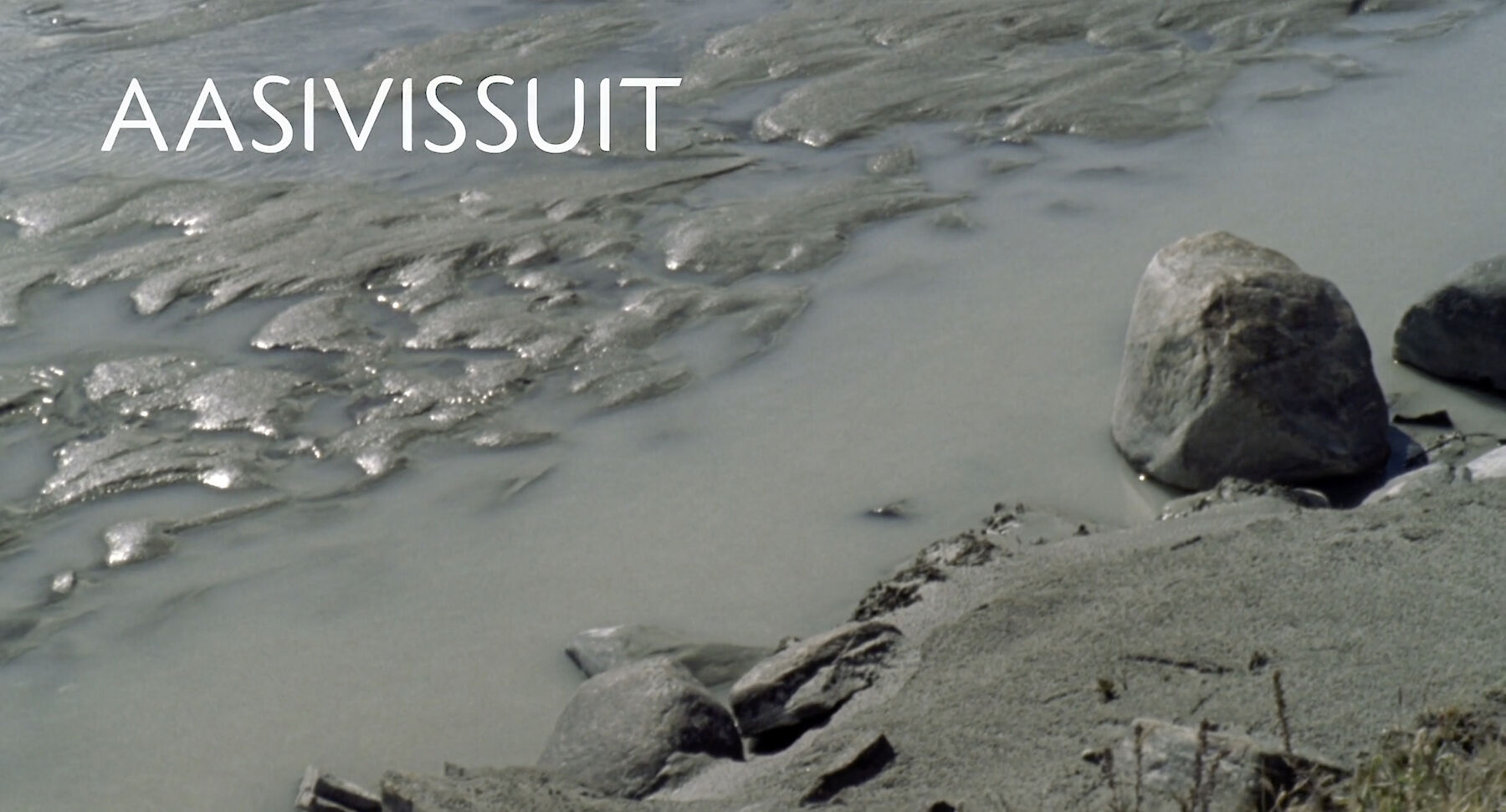
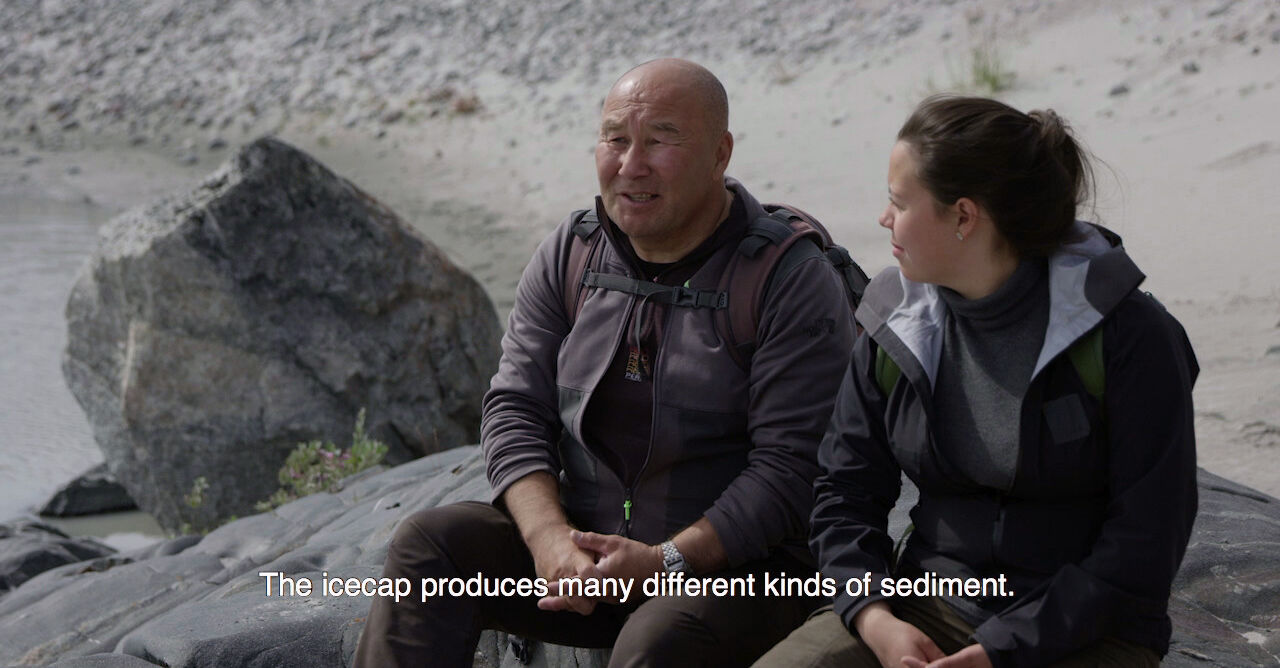
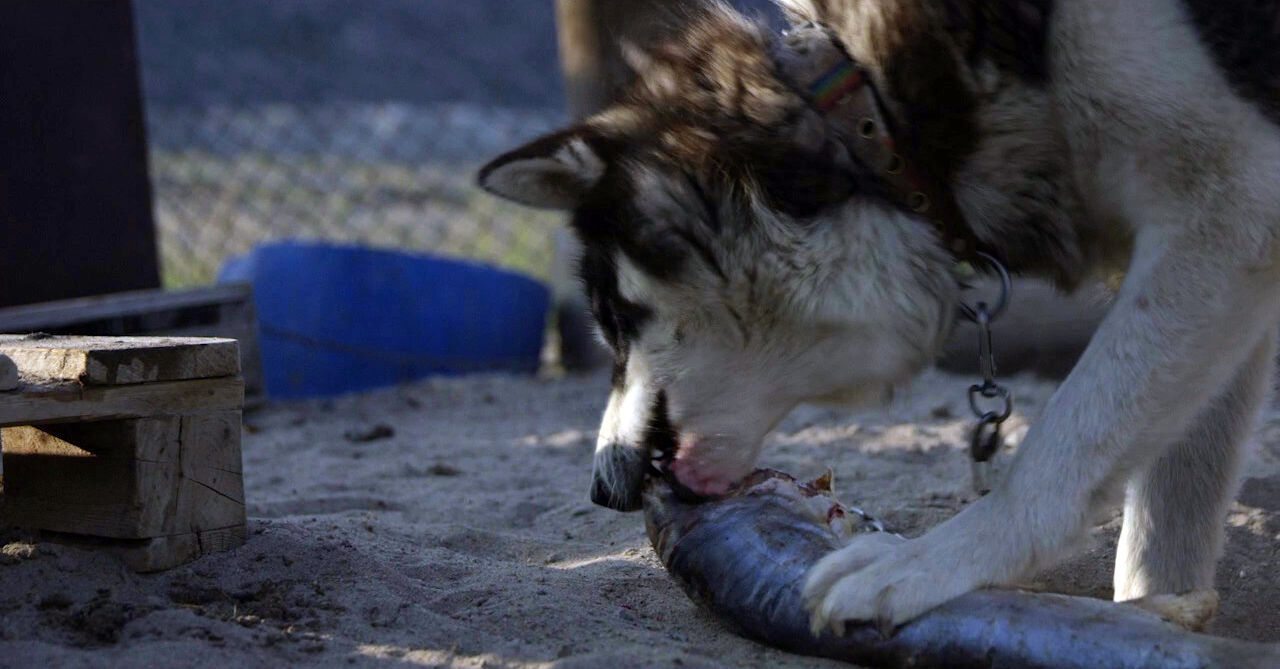
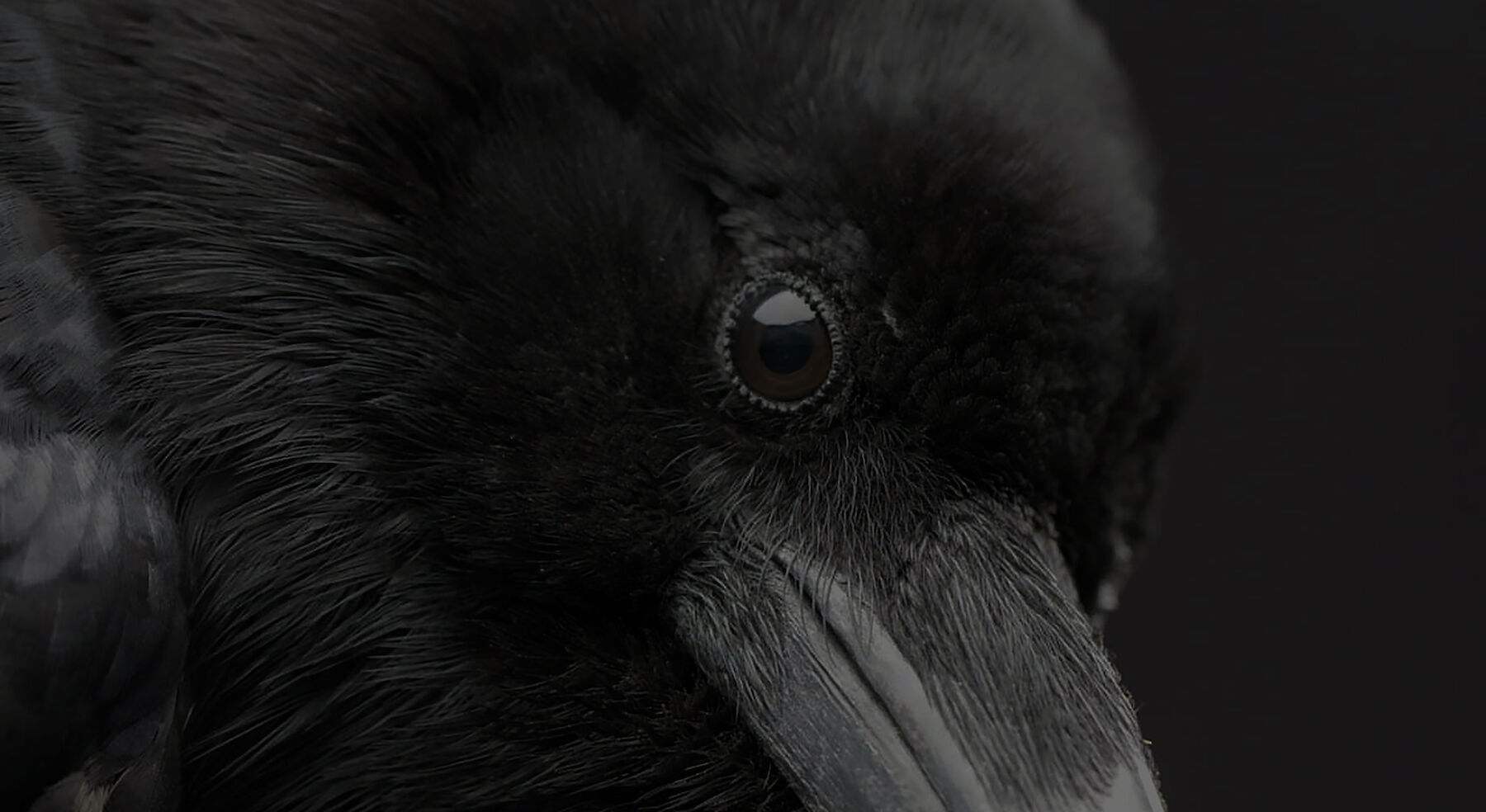
The film follows two park rangers at work and on expeditions through the sunlit grasslands of West Greenland. As they talk, they exchange new and old knowledge of the land, for example, how ancient fertile sediment from Greenland is used to fertilize depleted soil abroad, and how microbes have adapted to deal with pollution. In the meantime, the landscape and its inhabitants perform their acts.
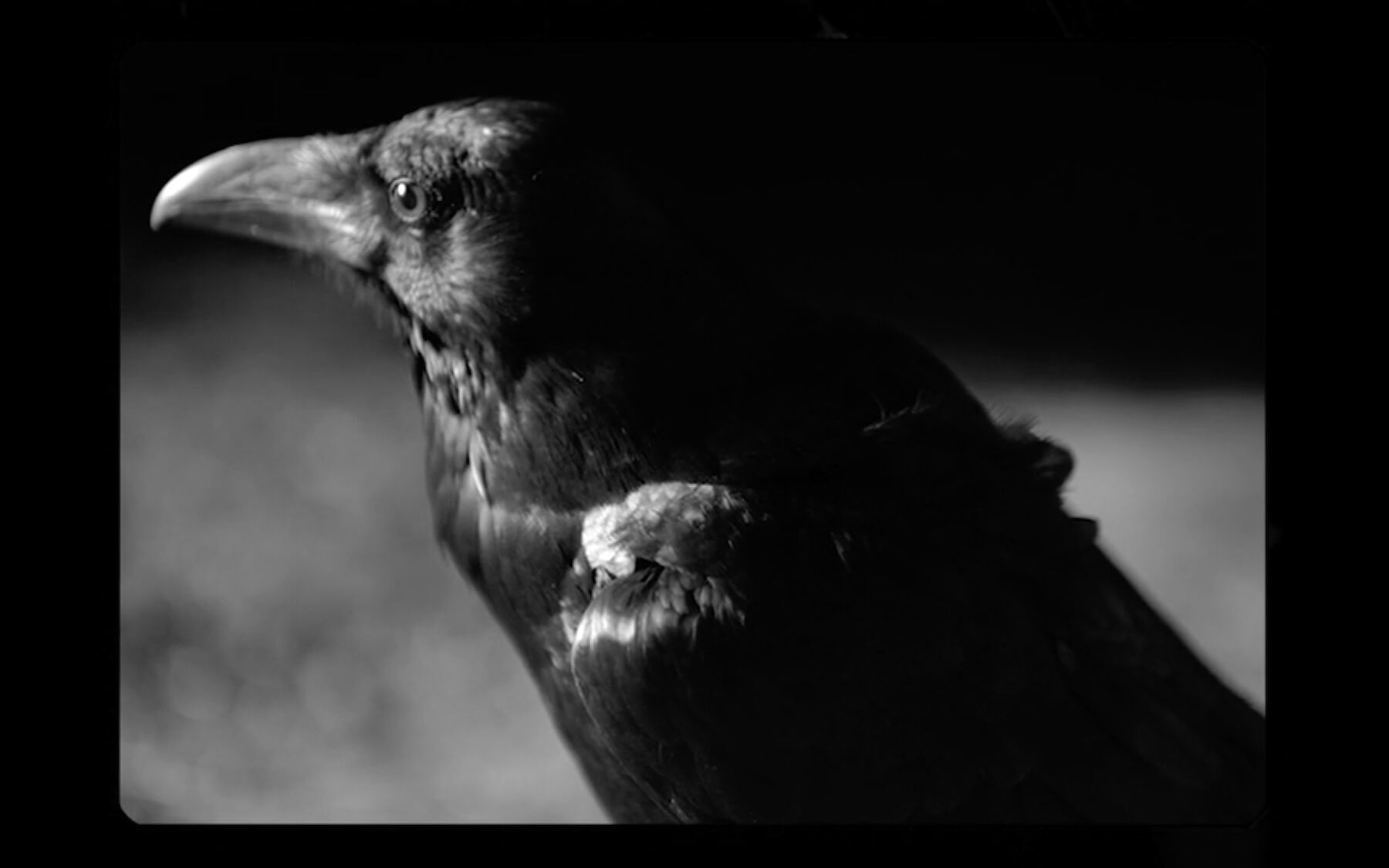
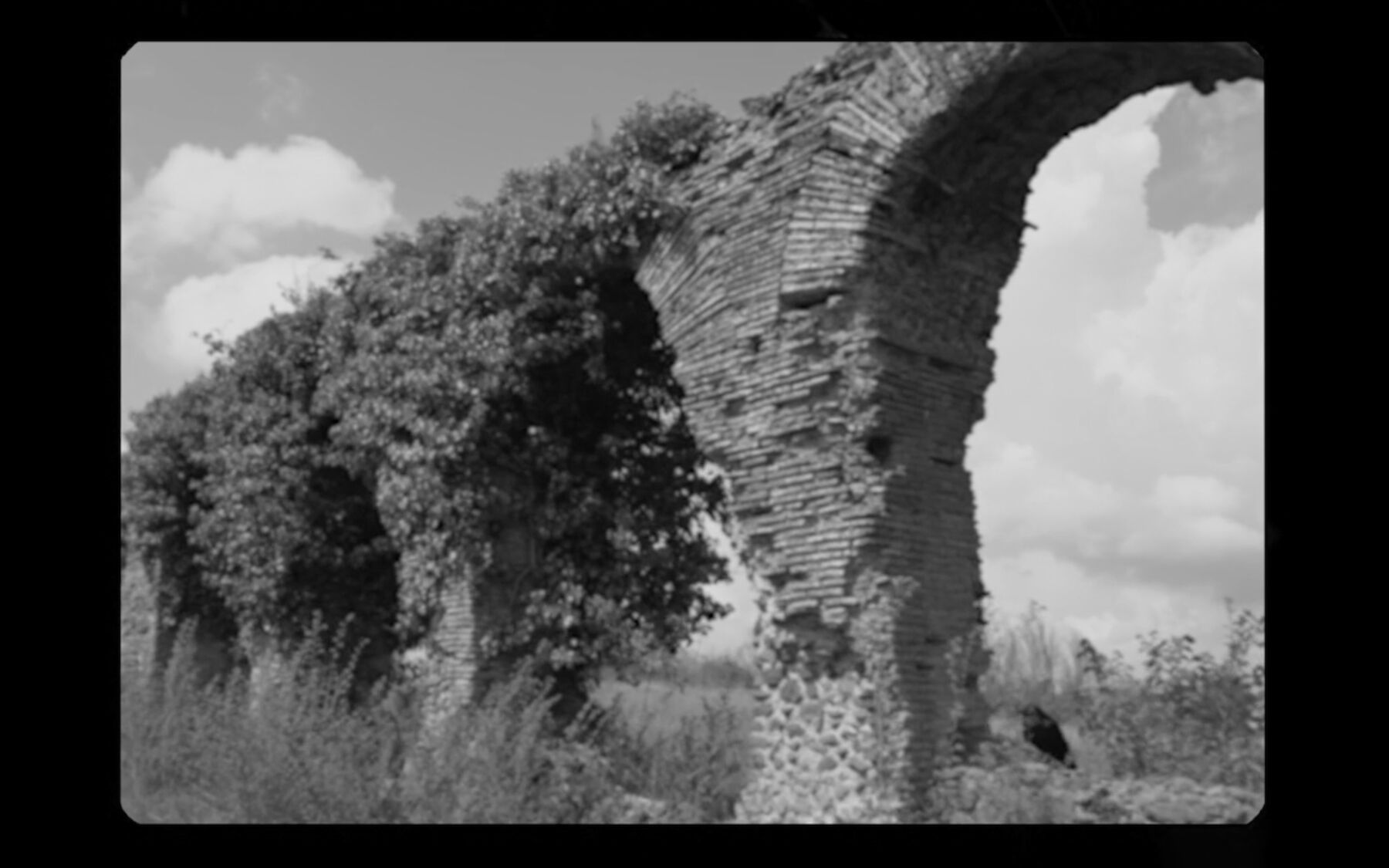
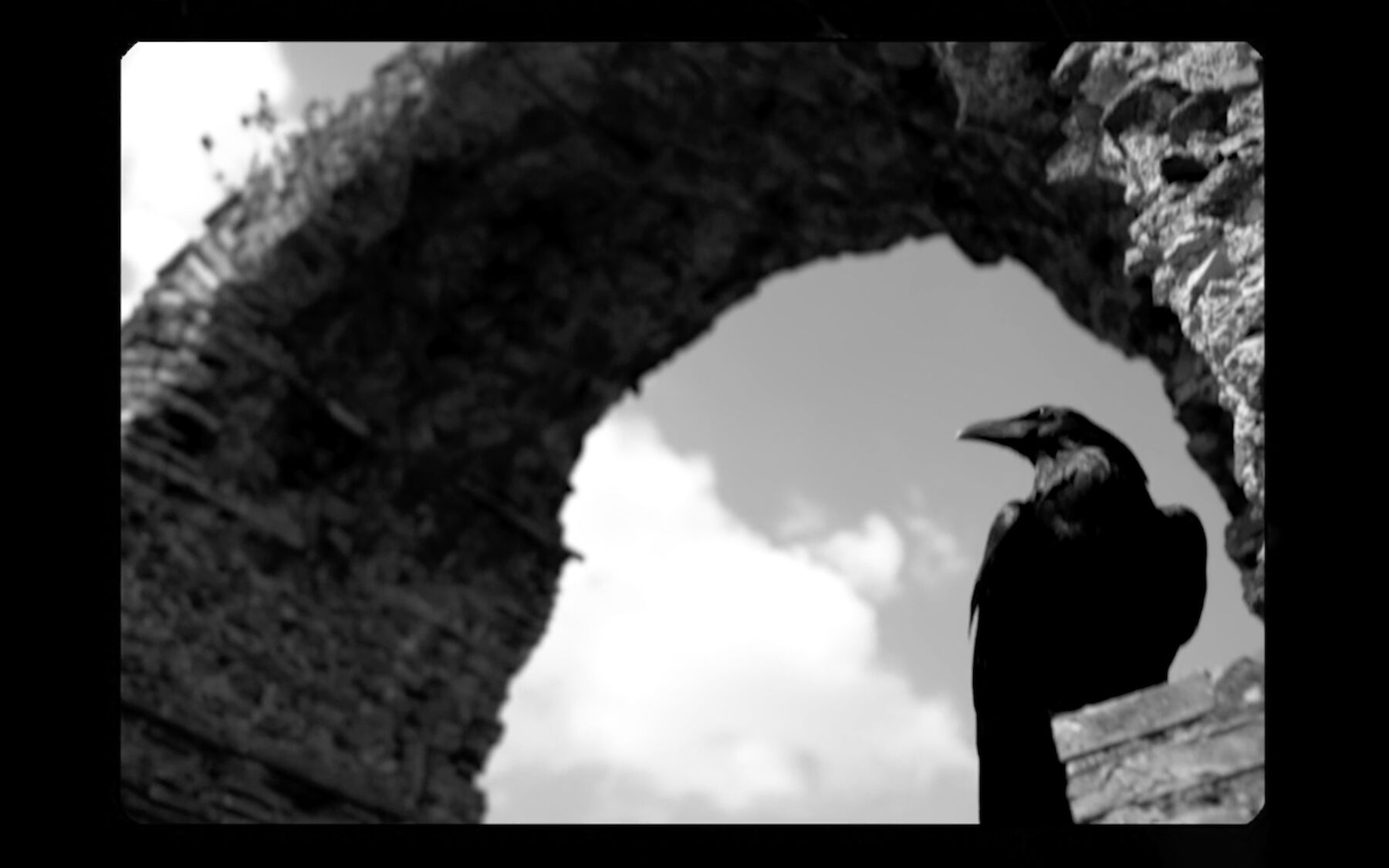
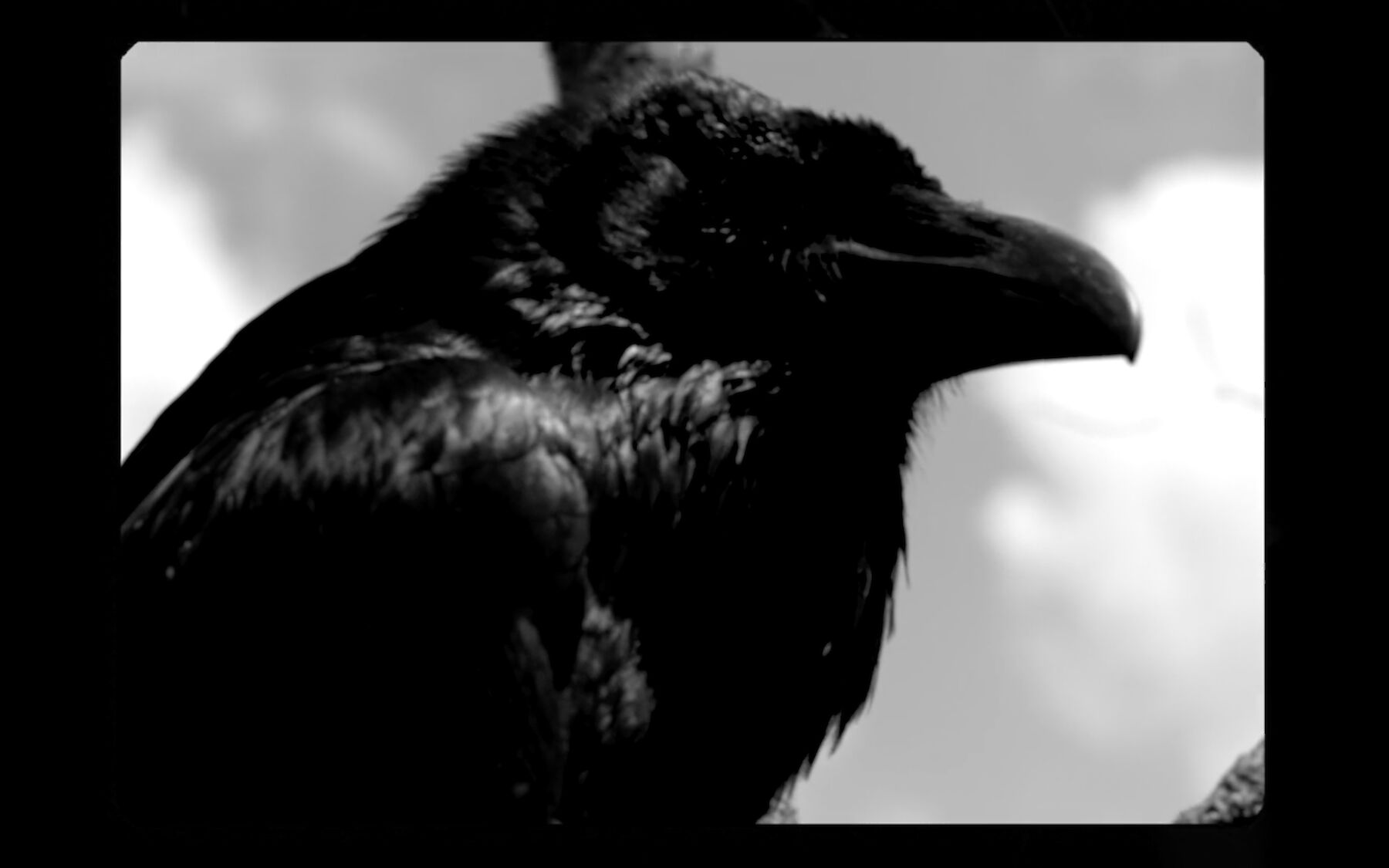
What would a visit to the Via Appia park in Rome look like if we considered the crow as guide? It turns out that Italian Filmmaker Pier Paolo Pasolini was the first to have formulated an answer to this question in 1966 with his film Uccellacci e Uccellini, known in English as "Hawks and Sparrows". In this film, we follow Toto and his son Ninetto on a walk through the Via Appia park. During their walks they meet a crow who can speak and who plays the role of a "left-wing intellectual". There are rumours that the crow that Pasolini filmed did not want to cooperate and repeatedly attacked the human protagonists.
This short analogue remake of the film, shows rehearsal recordings of a crow actor playing itself. The recordings complement the footage Pasolini recorded in 1966, but instead of imposing a human ideology and voice on the crow, they present the crow as a non-human guide in the Via Appia park.
Camera: Jasper Coppes
Edit: Jasper Coppes
No Sound
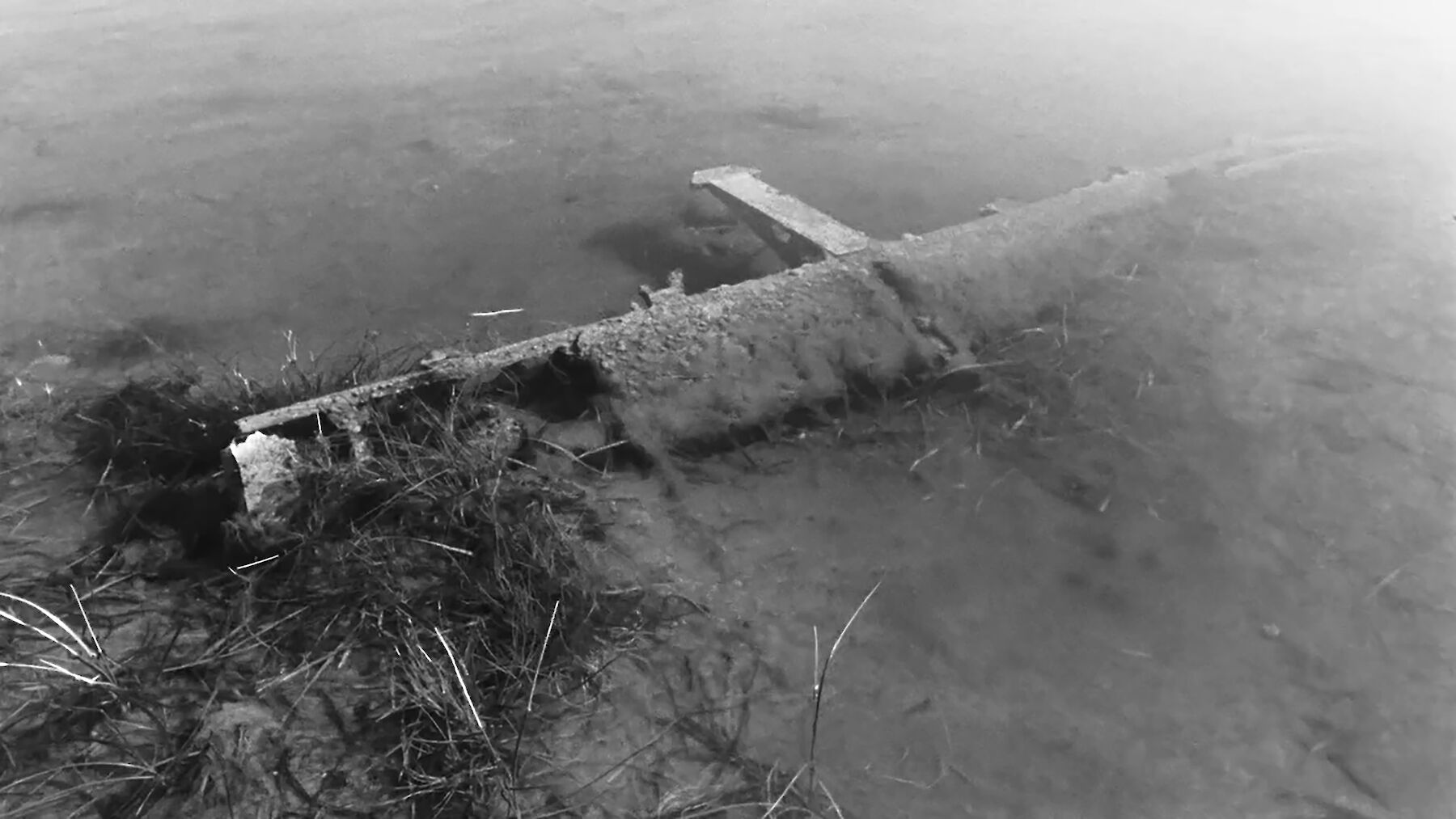
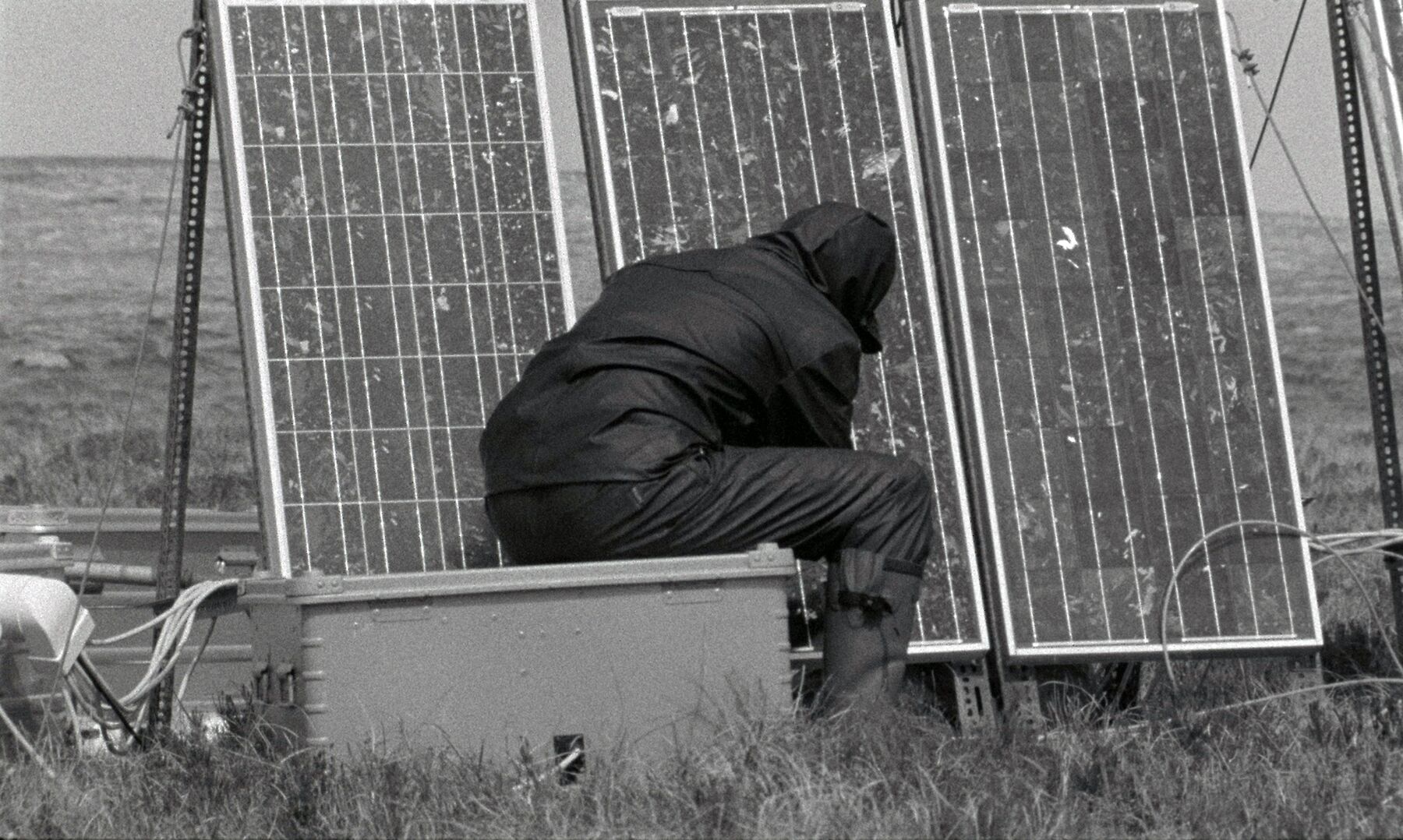
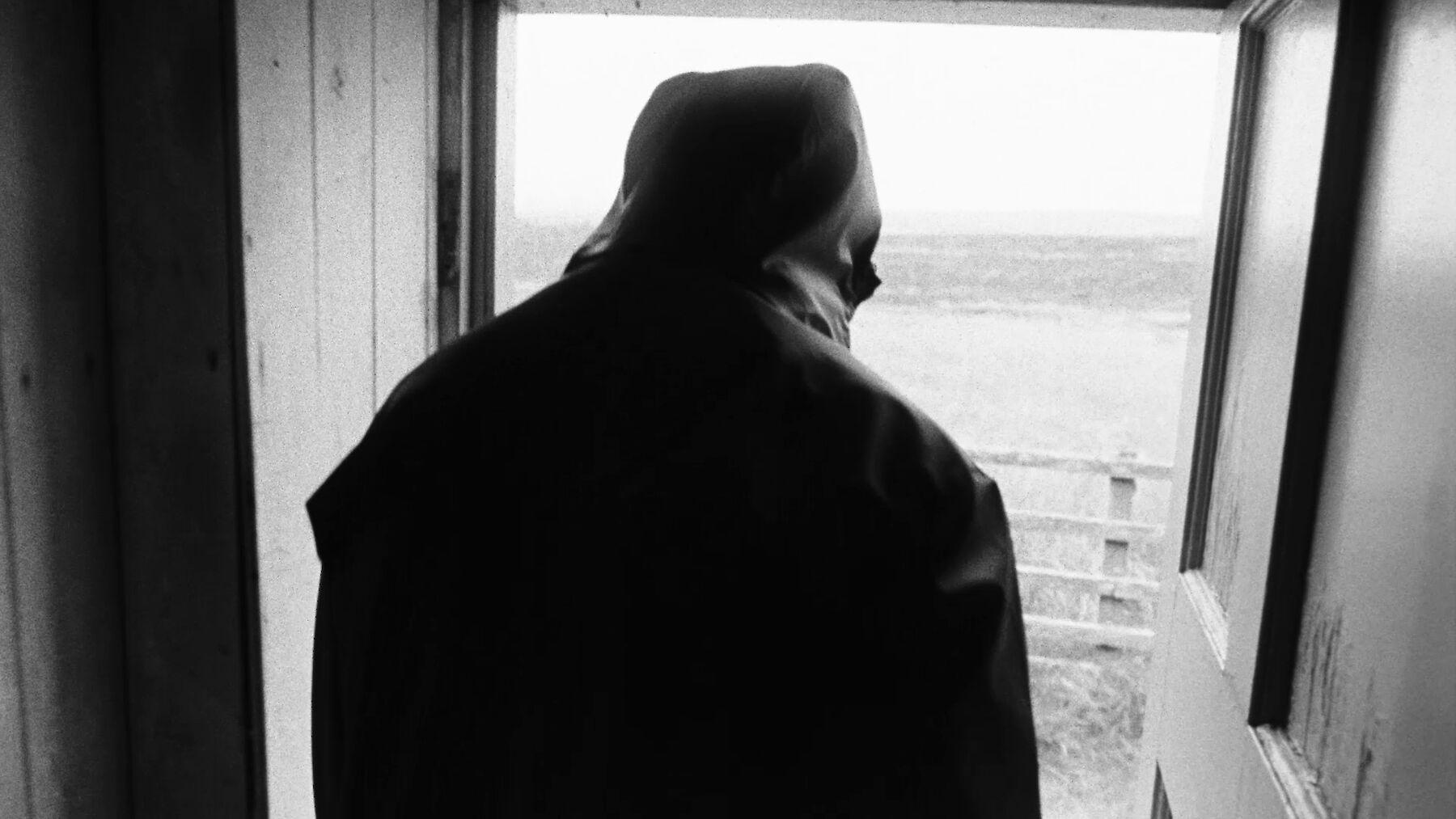
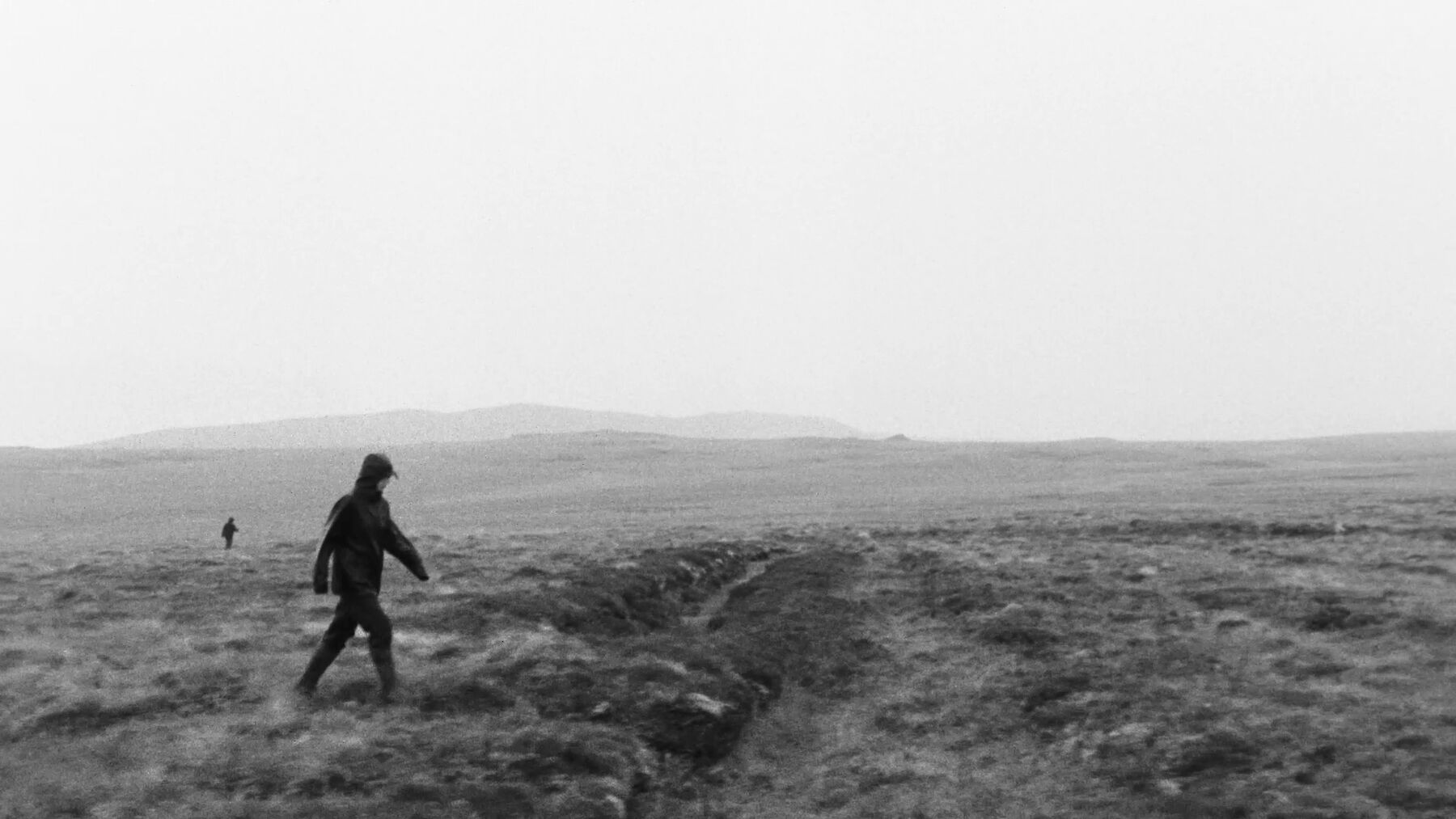
The film consists of a series of visual fieldnotes that together map a controversial landscape, in the far North of Scotland. The recordings adjust previous attempts to give meaning to this landscape as a nature reserve, or to deprive it of meaning for industrialization.
The film was shot during a week-long expedition, in the company of a cameraman, a soundrecorder and a local archaeologist. Through our exchange of cinematographic knowledge and archaeological fieldwork, Flow Country became a new speculative area: neither past nor present, equally an ongoing investigation and archaeological artefact.
Camera: Casper Brink
Sound: Malu Peeters
Archaeologist: Dan Lee
Edit: Jasper Coppes
Scottish Short Film Award GSFF17 (Glasgow Short Film Festival 2017).
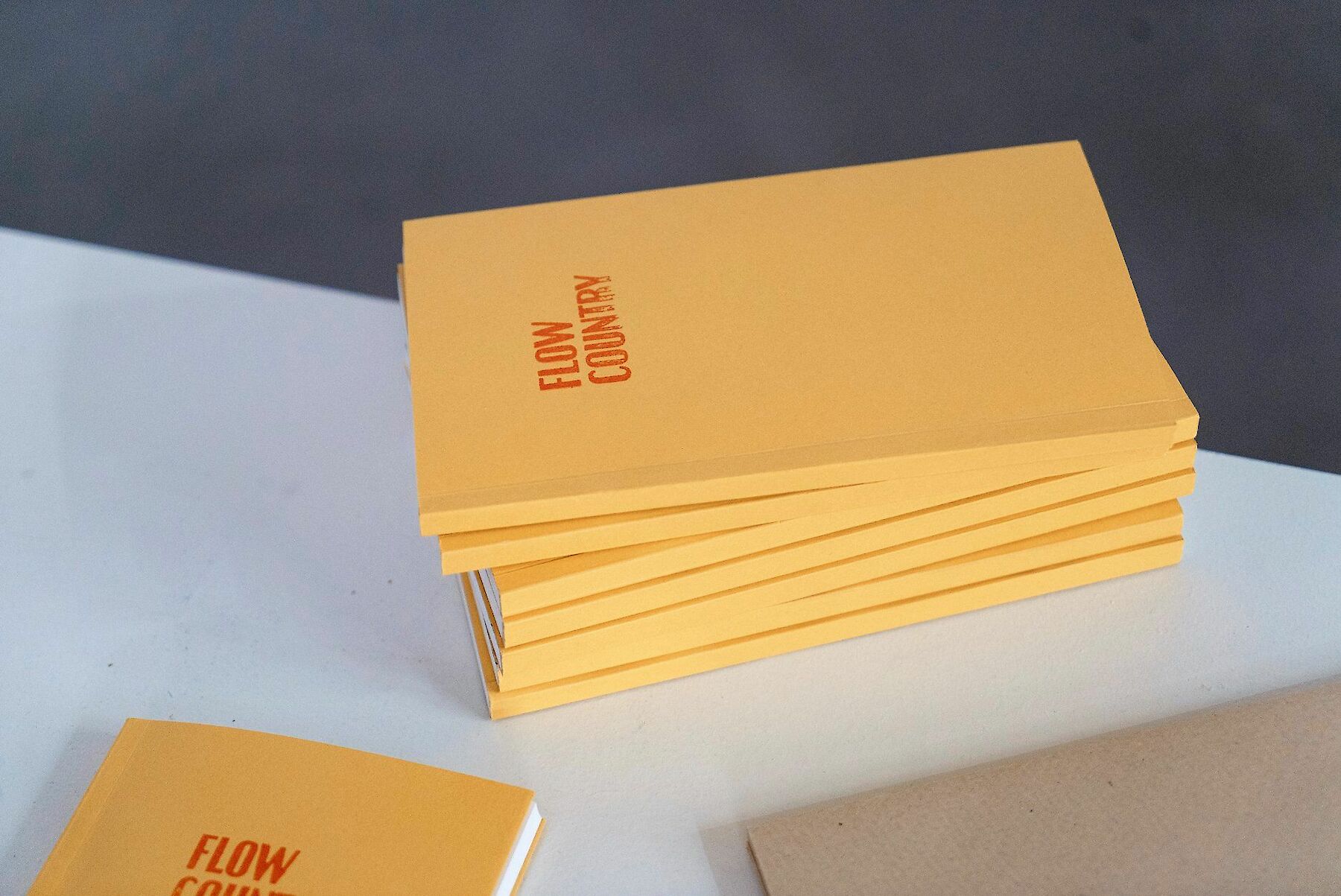
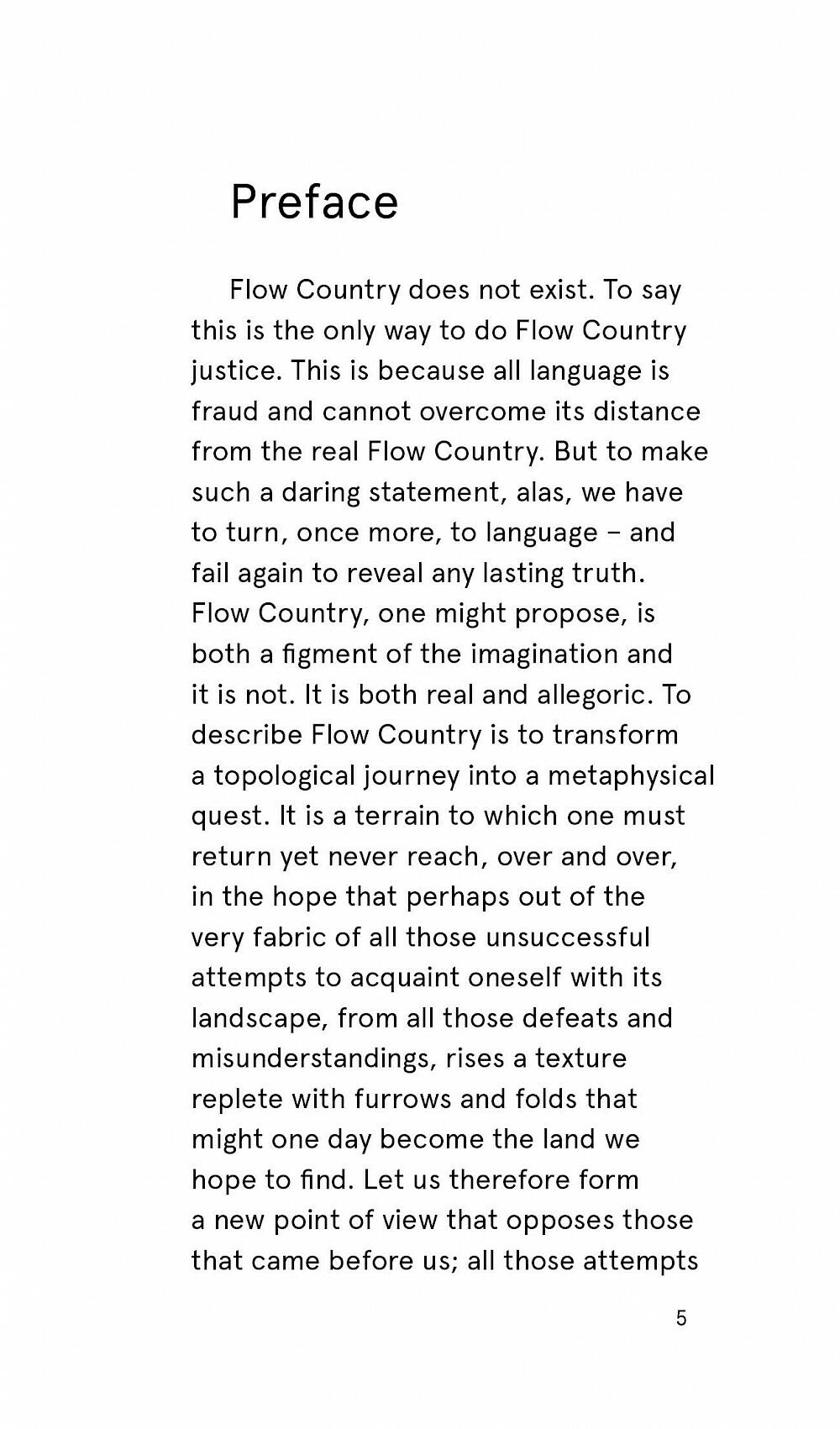
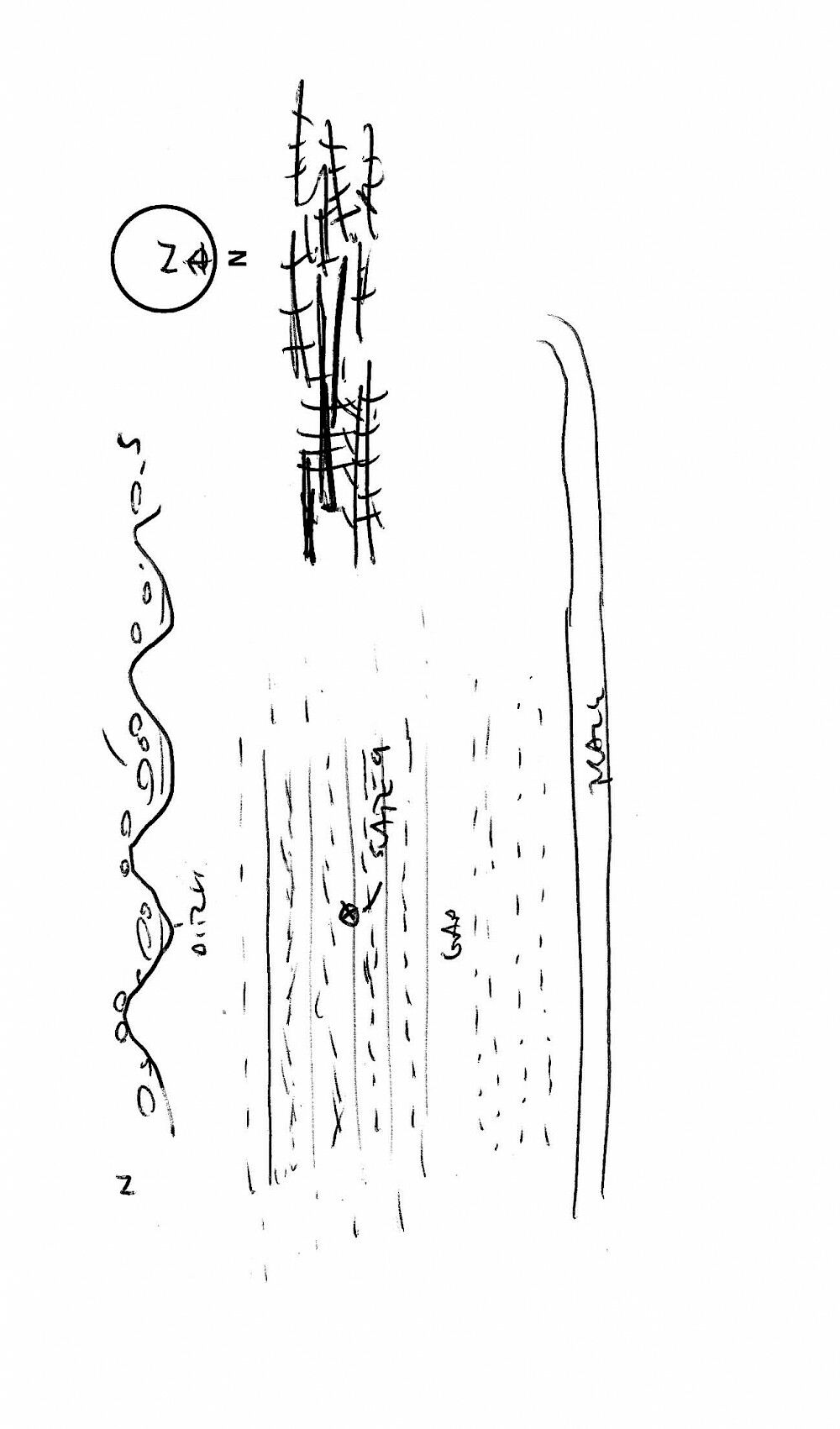
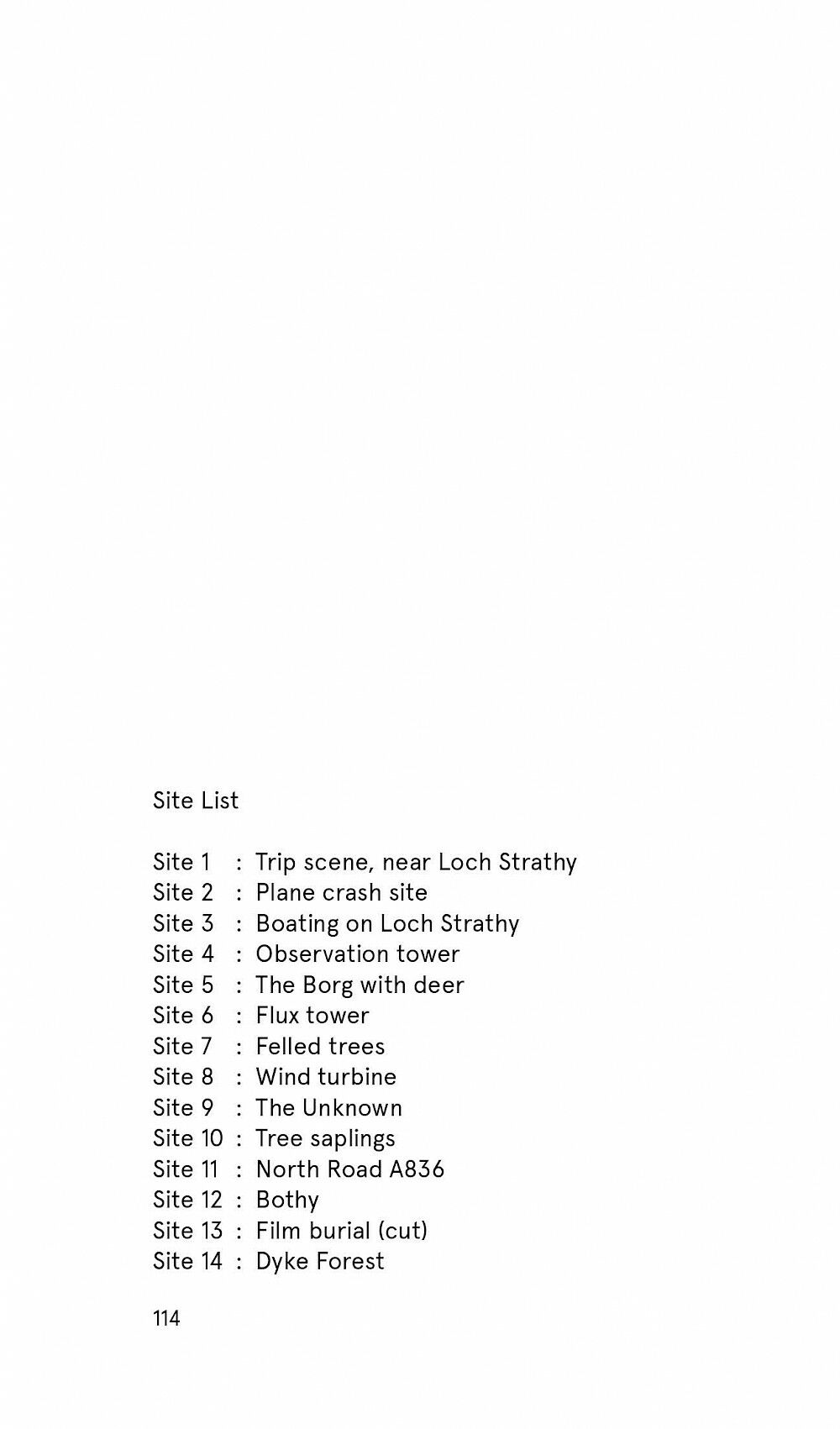
FLOW COUNTRY is a collaboratively written piece of fictocritisism by artist Jasper Coppes and archaeologist Daniel Lee. Based on their earlier cinematographic ventures into a contested site in the far North of Scotland, the book is a reconnaissance of real and imagined sites – taking shape as a liquid land that fluctuates between blanket bog, film emulsion and literary space. The book offers a possible way out of the many ‘transformation-narratives’ that tried to exploit or reform this vast terrain.
Published by Publication Studio Glasgow
ISBN 978-1-9995899-0-5
Read or order online.
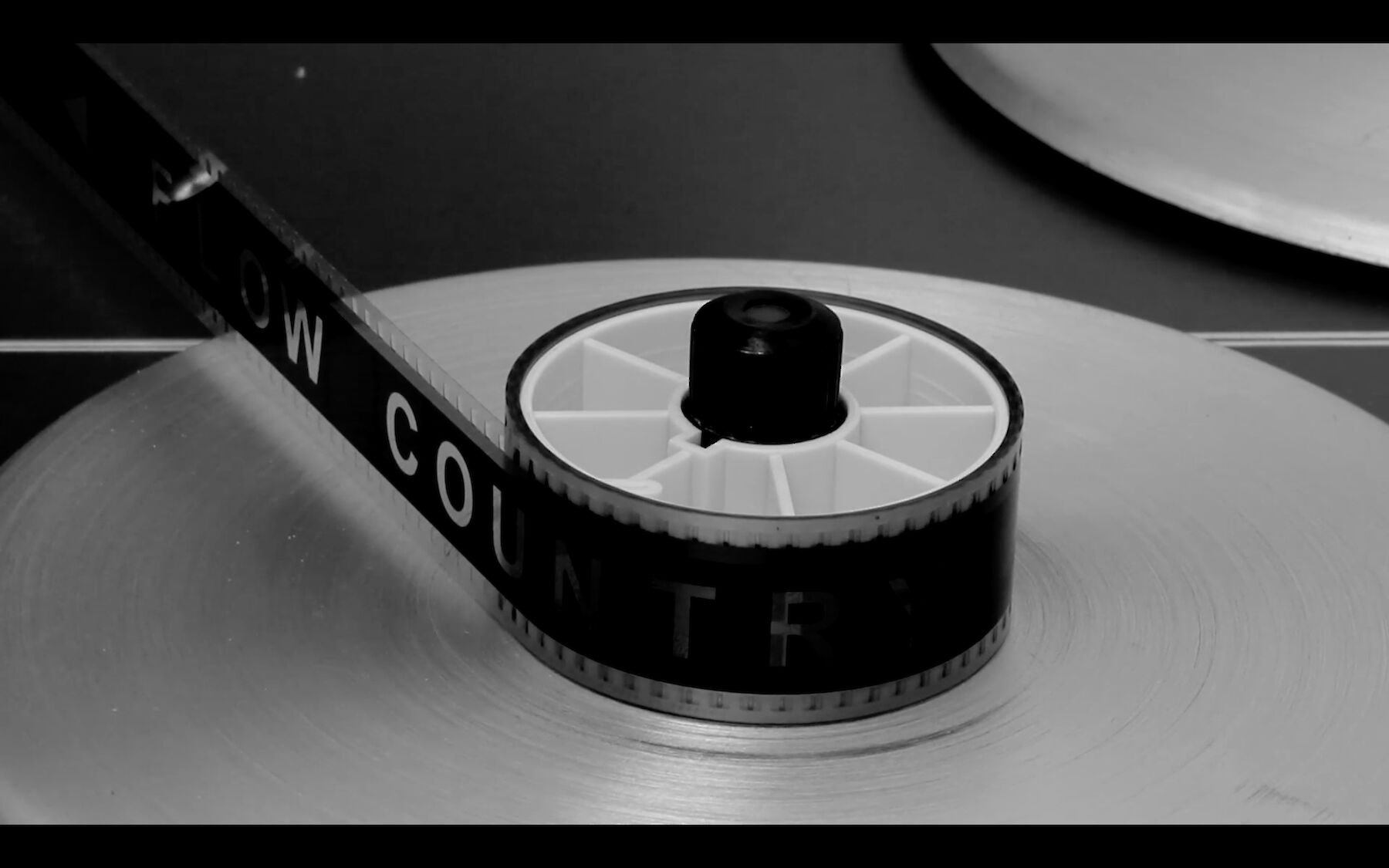
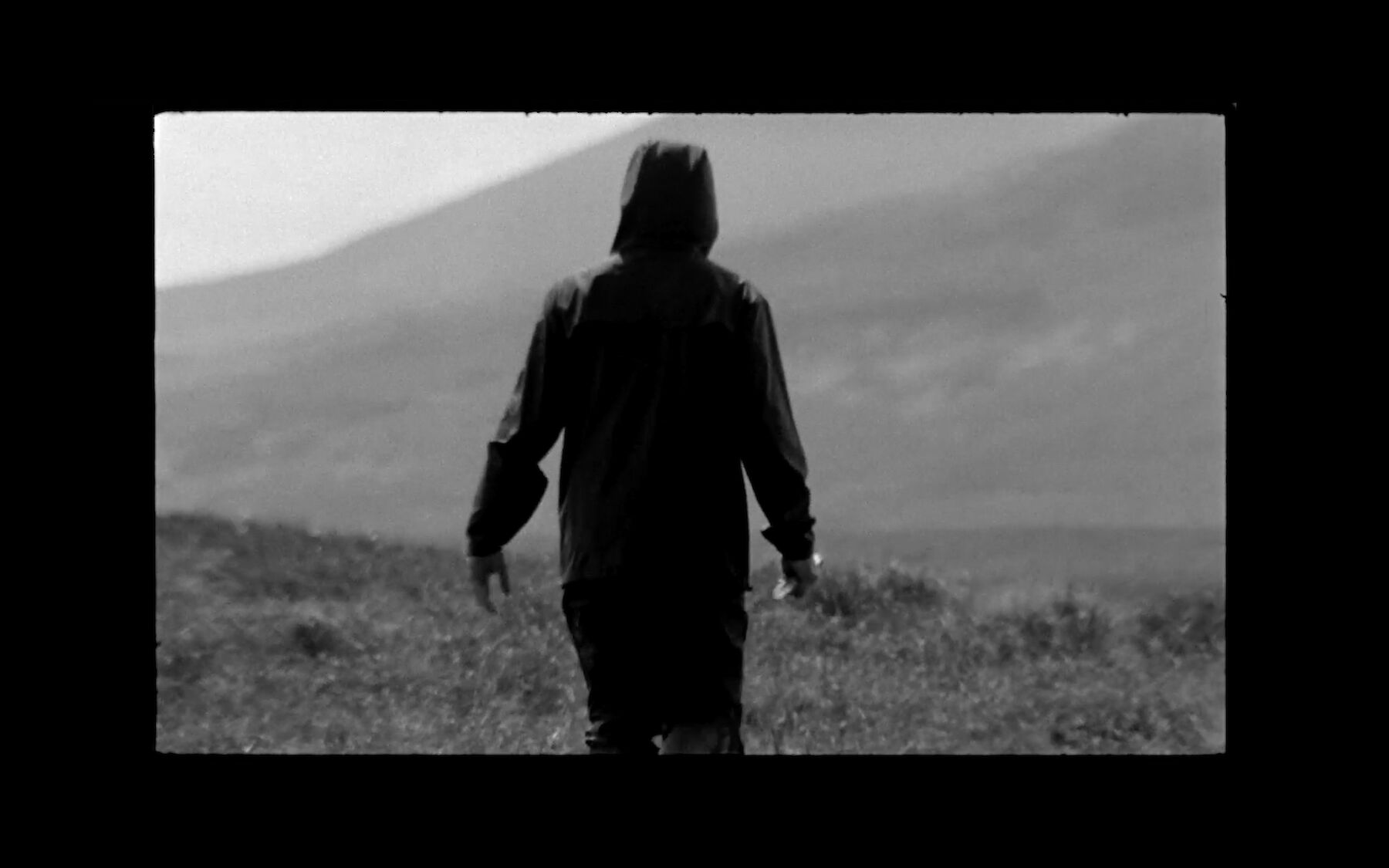
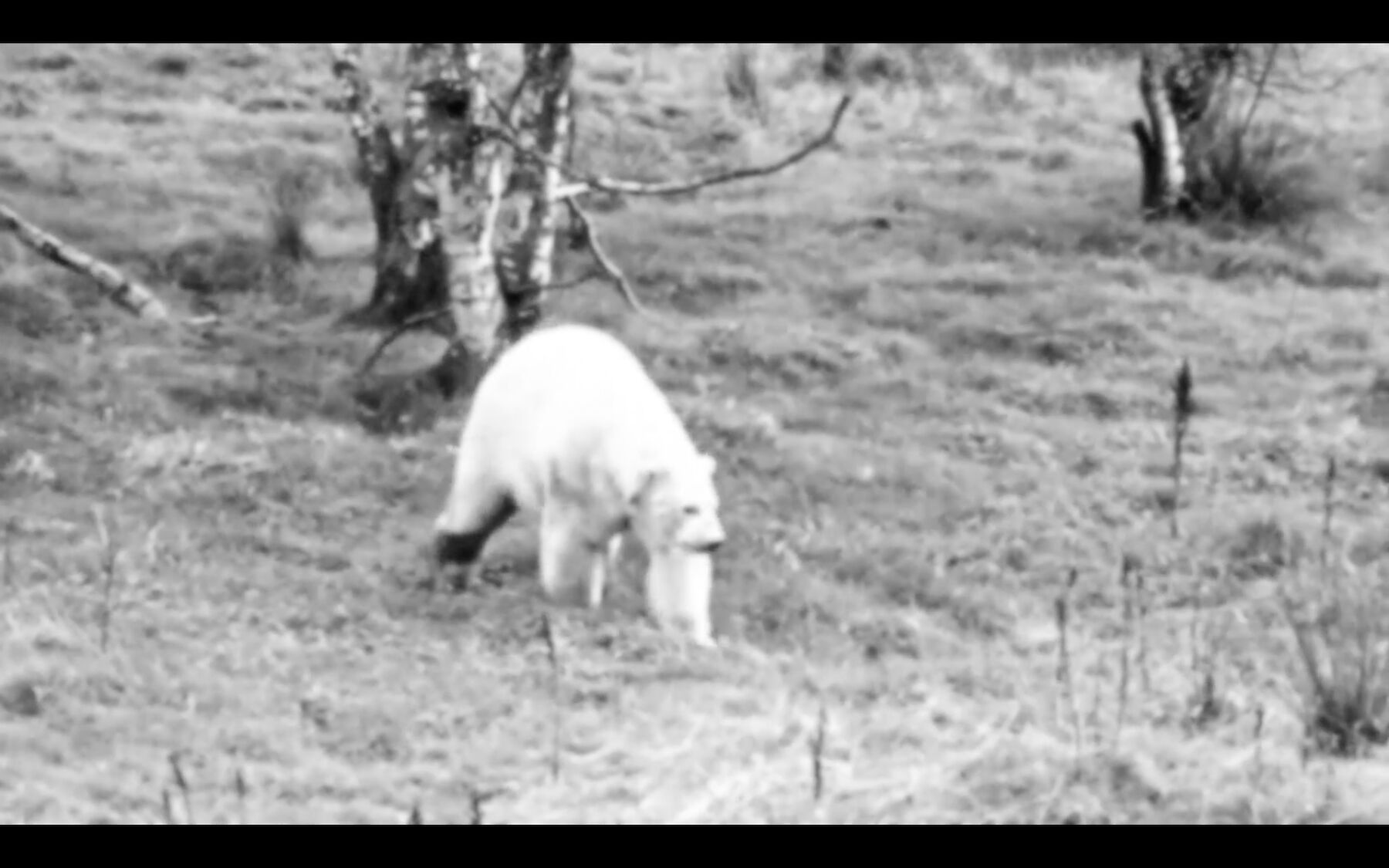
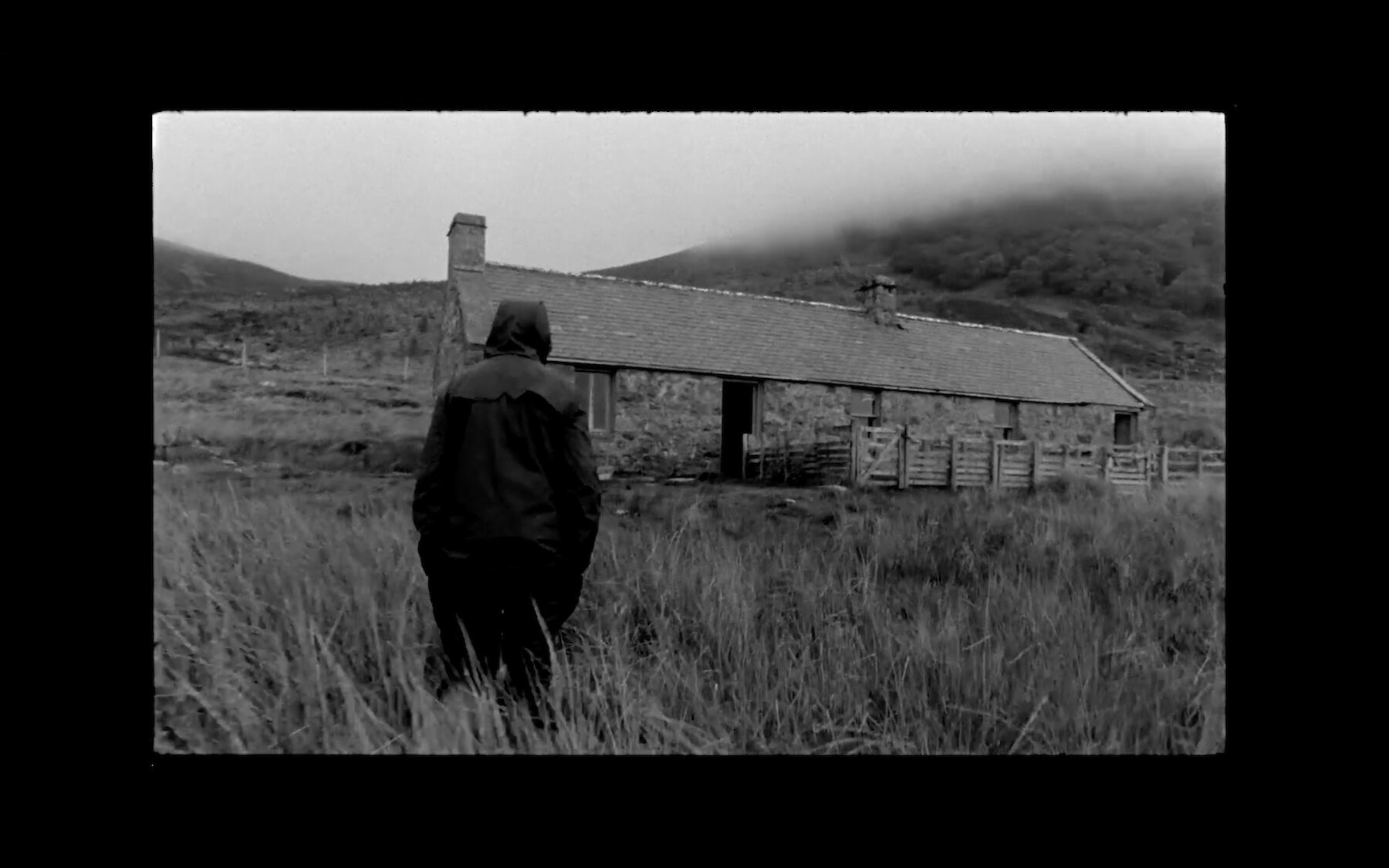
In Flow Country an anonymous narrator investigates a 16mm film as an archaeological record. He wonders to what degree the landscape it depicts influenced the production of the film. While scanning the stark images of a deserted landscape, the idea arises that the 'archaeology of the present' can be a site of production – where ecology and man play equal parts. The role of the archaeologist transforms from being the observer of a disconnected past towards becoming an immersed wonderer, actively creating future historical layers.
Camera: Casper Brink, Jasper Coppes
Voice: Alan Currall
Edit: Jasper Coppes
Watch online at Rietveld TV.
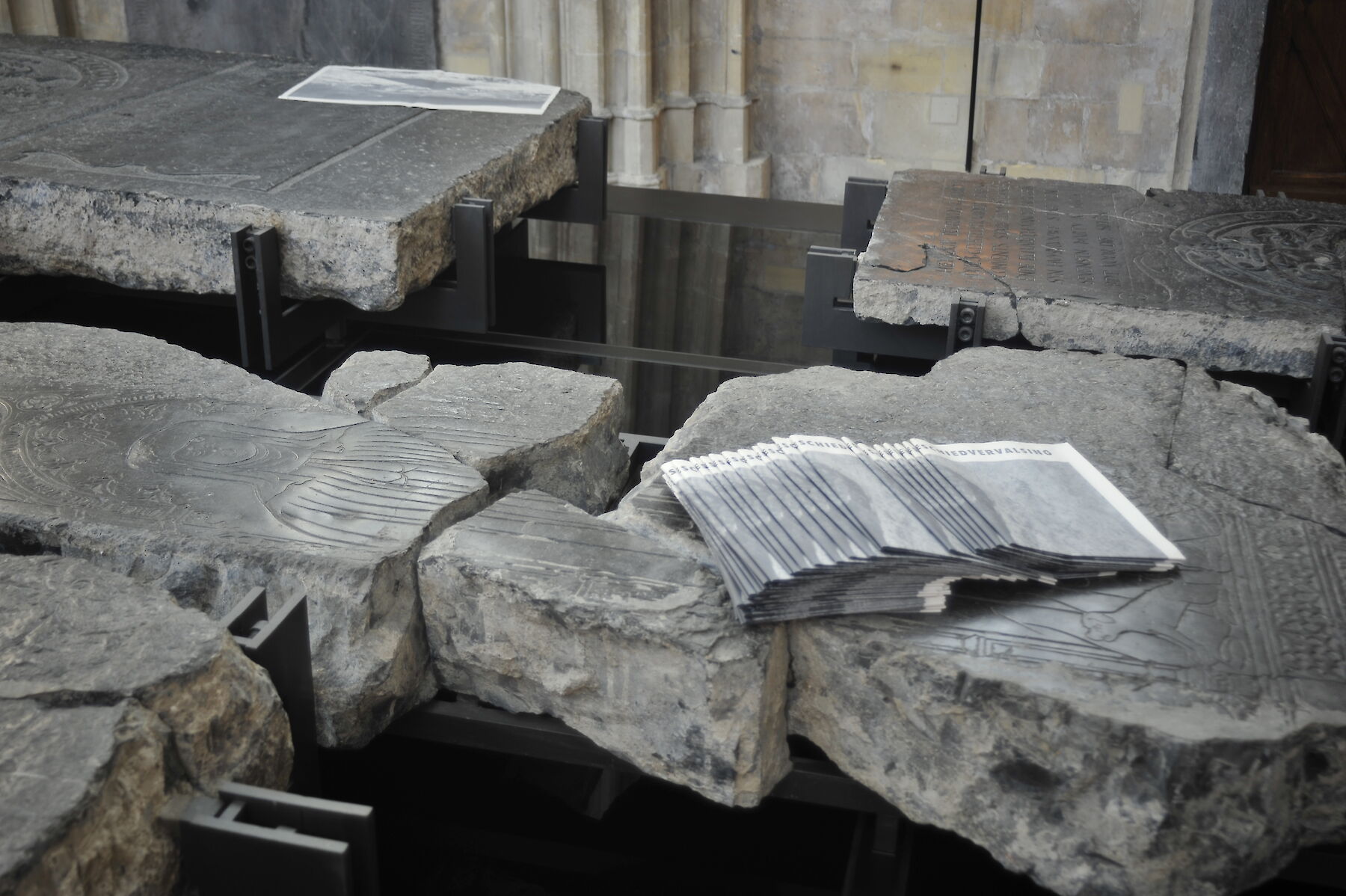
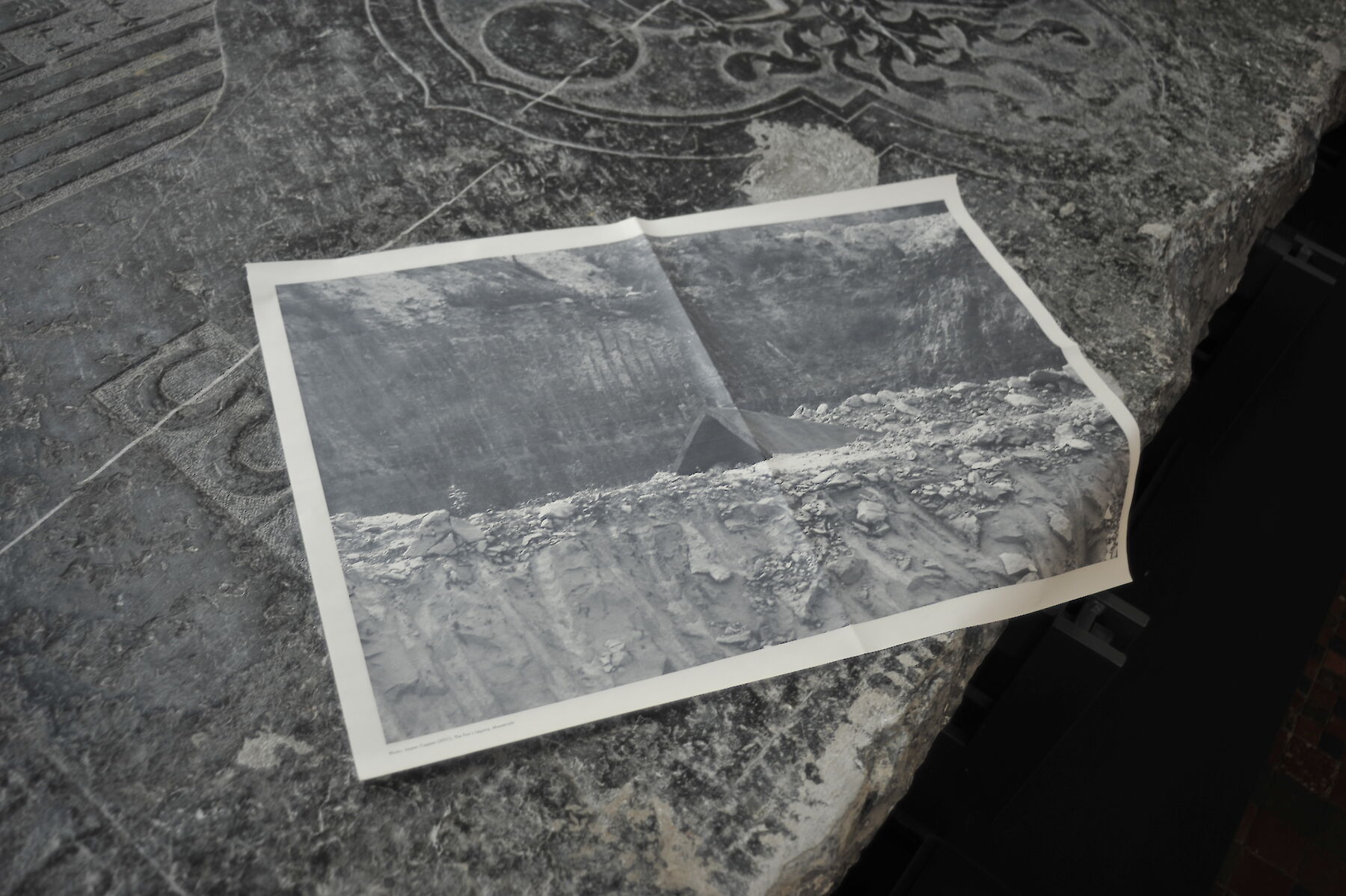
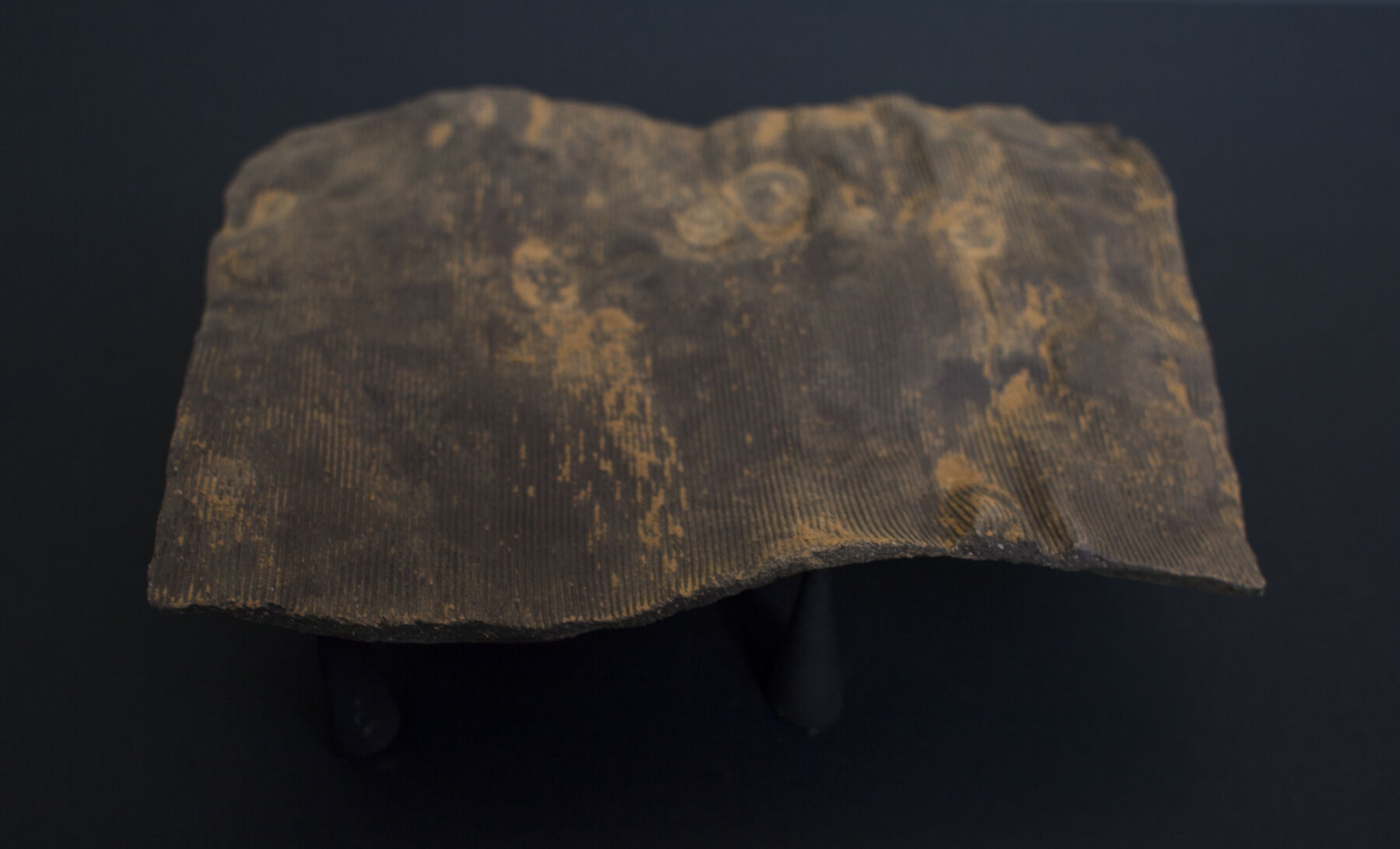
This installation brings together three forged historical documents:
a fictional essay
a physical intervention in the coal mining history of Limburg
ceramic artifacts designed for an archaeological excavation
Curator: Krien Clevis.
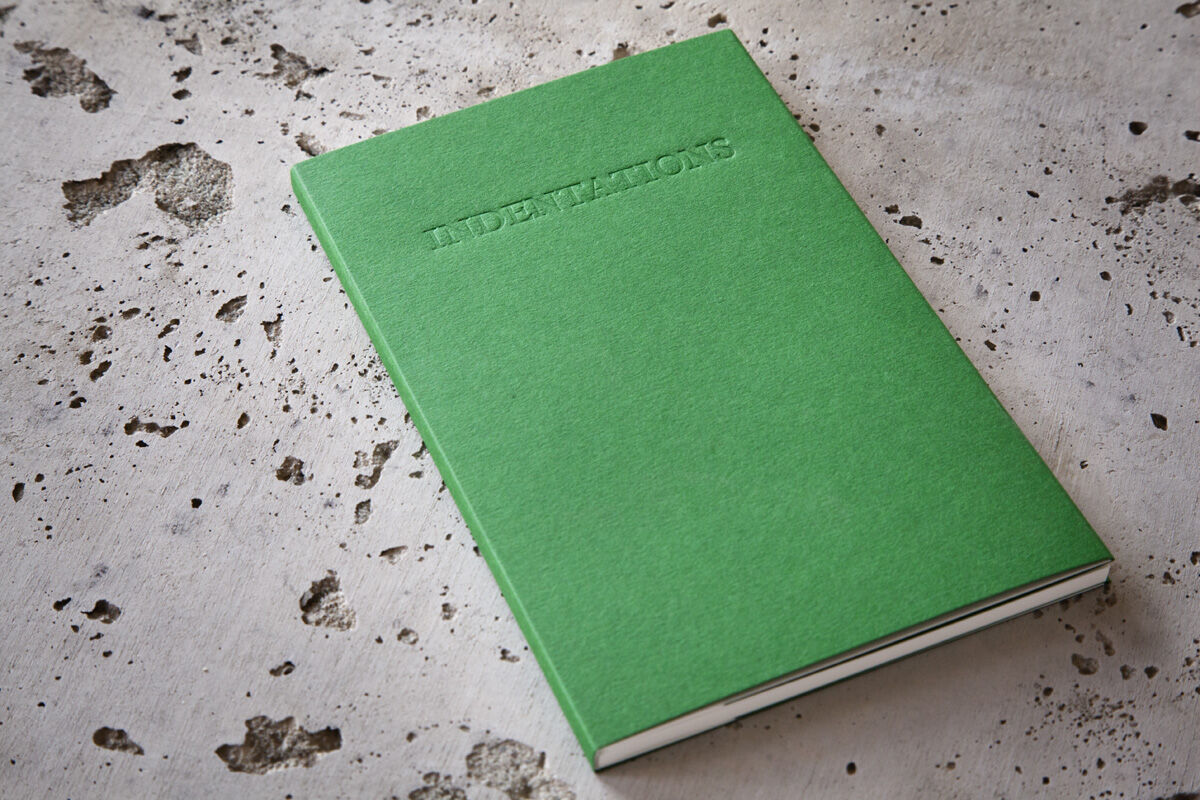
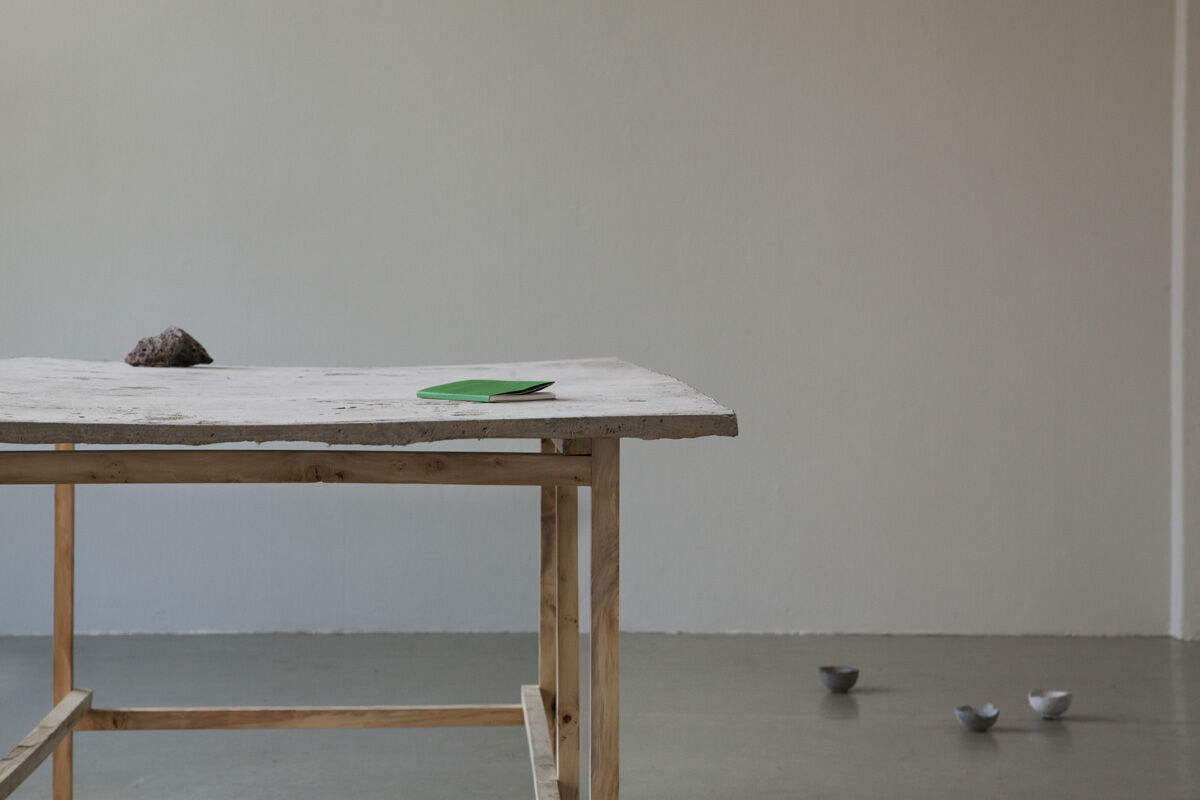
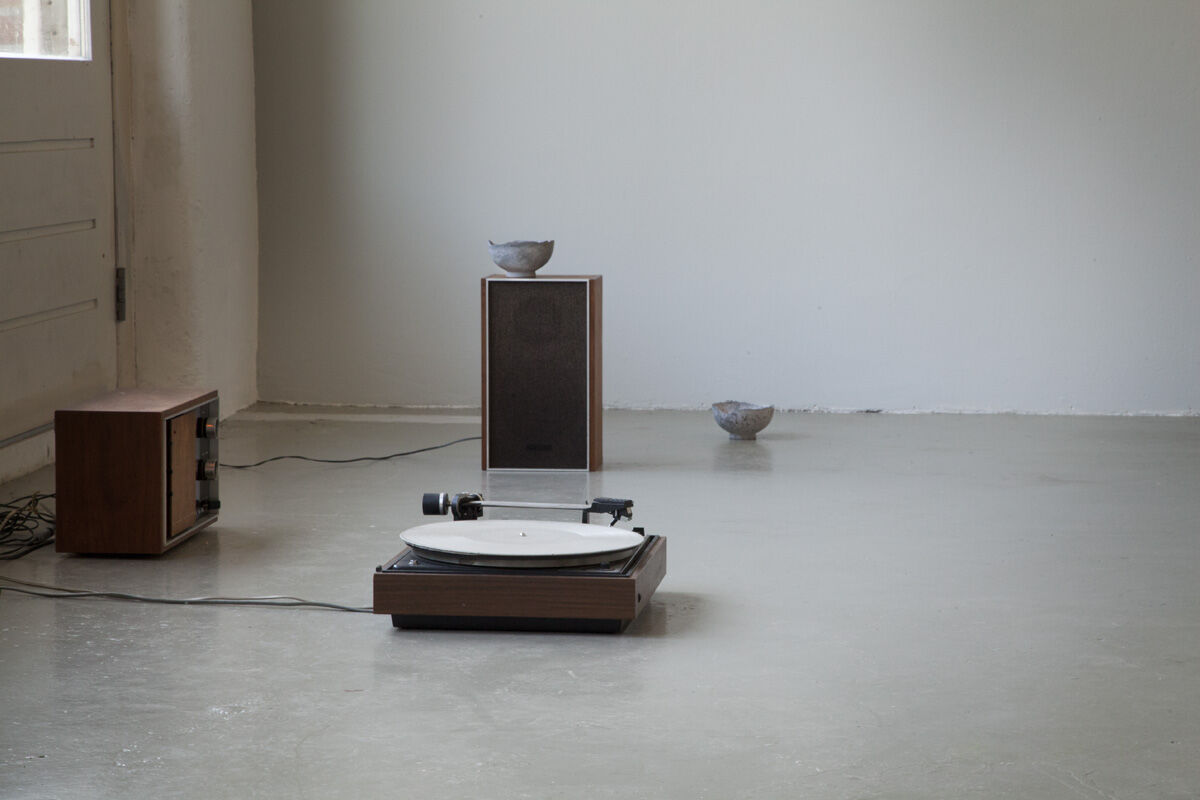
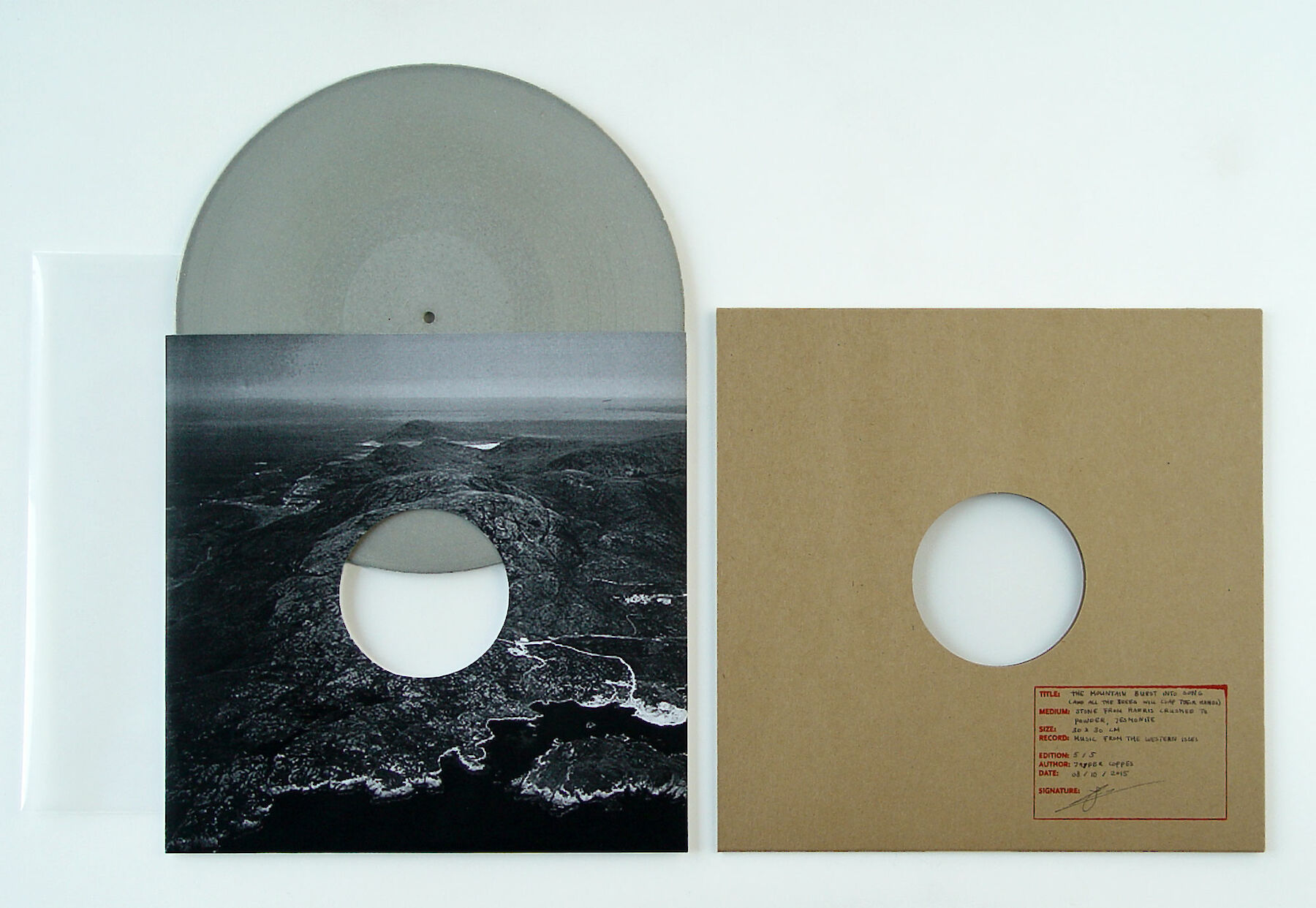
'Roineabhal' is a mountain on the Isle of Harris, Scotland. There was a conflict on that mountain in the 1990s - between a cement factory and local inhabitants - that took on mythical proportions. The installation unites the various materials associated with this conflict, including:
An LP made with powdered stone from the Roineabhal. Local songs are featured on the LP, which are slowly disappearing. When the record is played, the recording erodes.
'Indentations' is an essay in which ideas about language, silent stones and mythical events are interwoven. Indentations can be translated as 'impressions': the dent that an experience leaves in you or the dent that can be made in an object (sculpture).
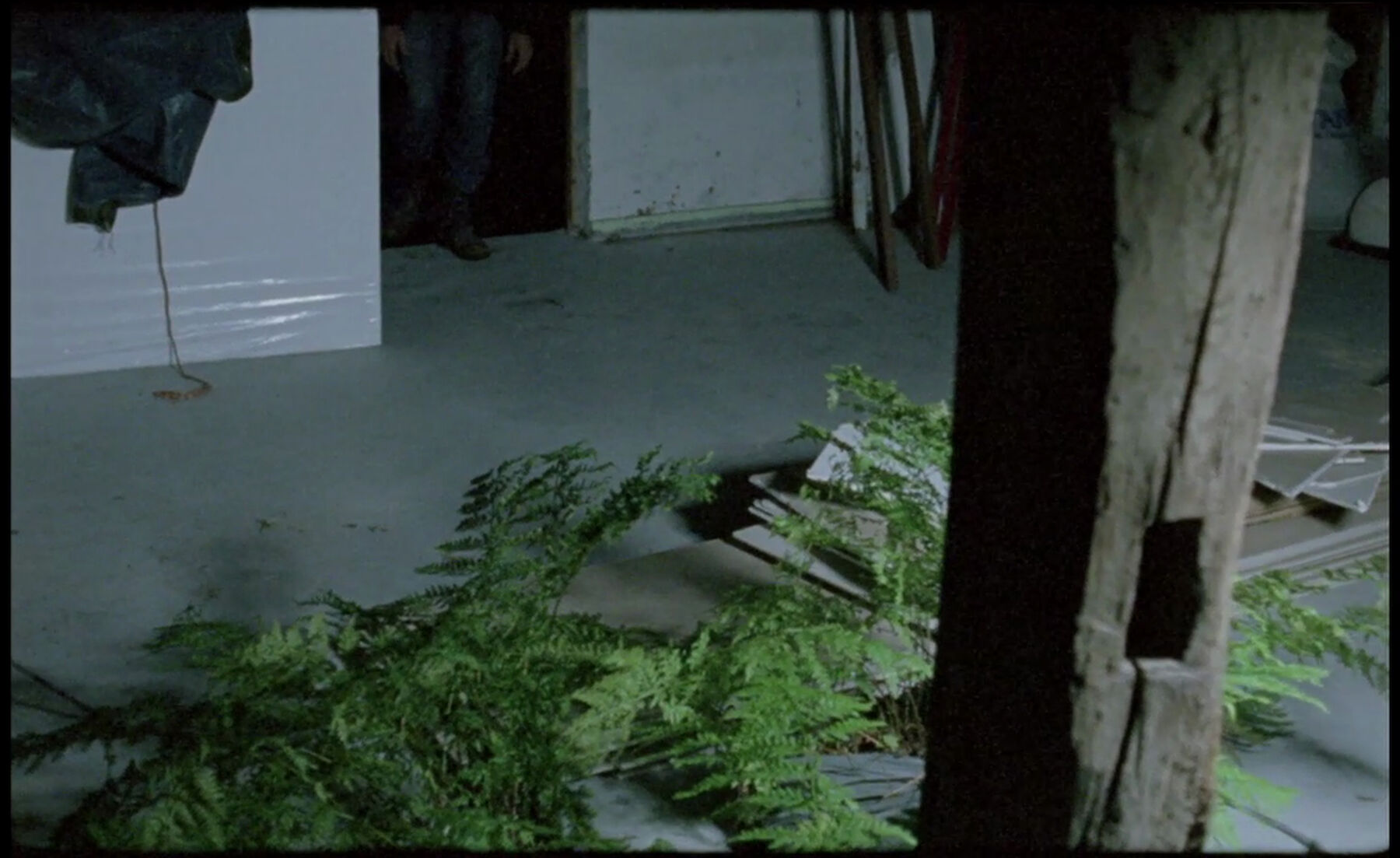
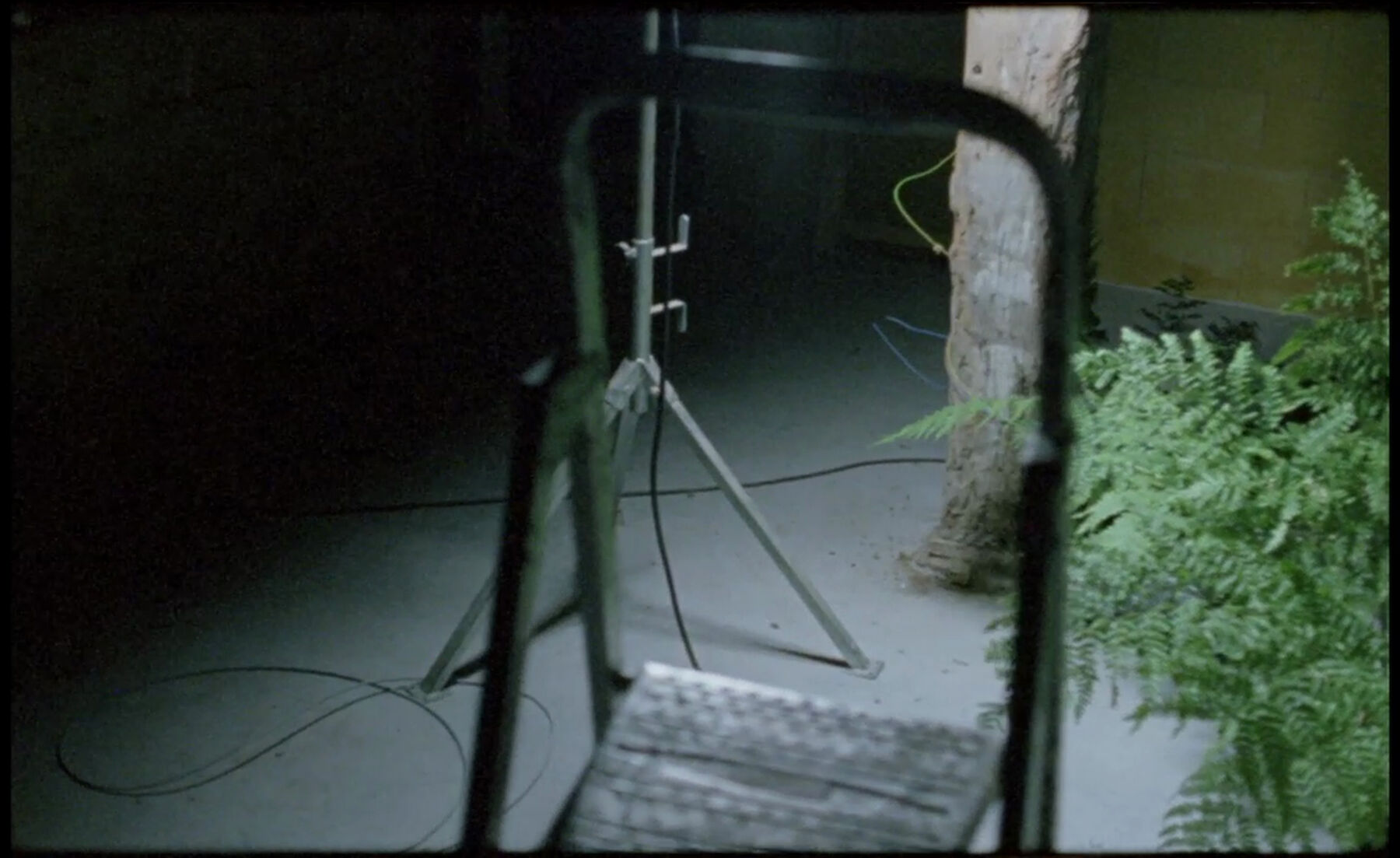
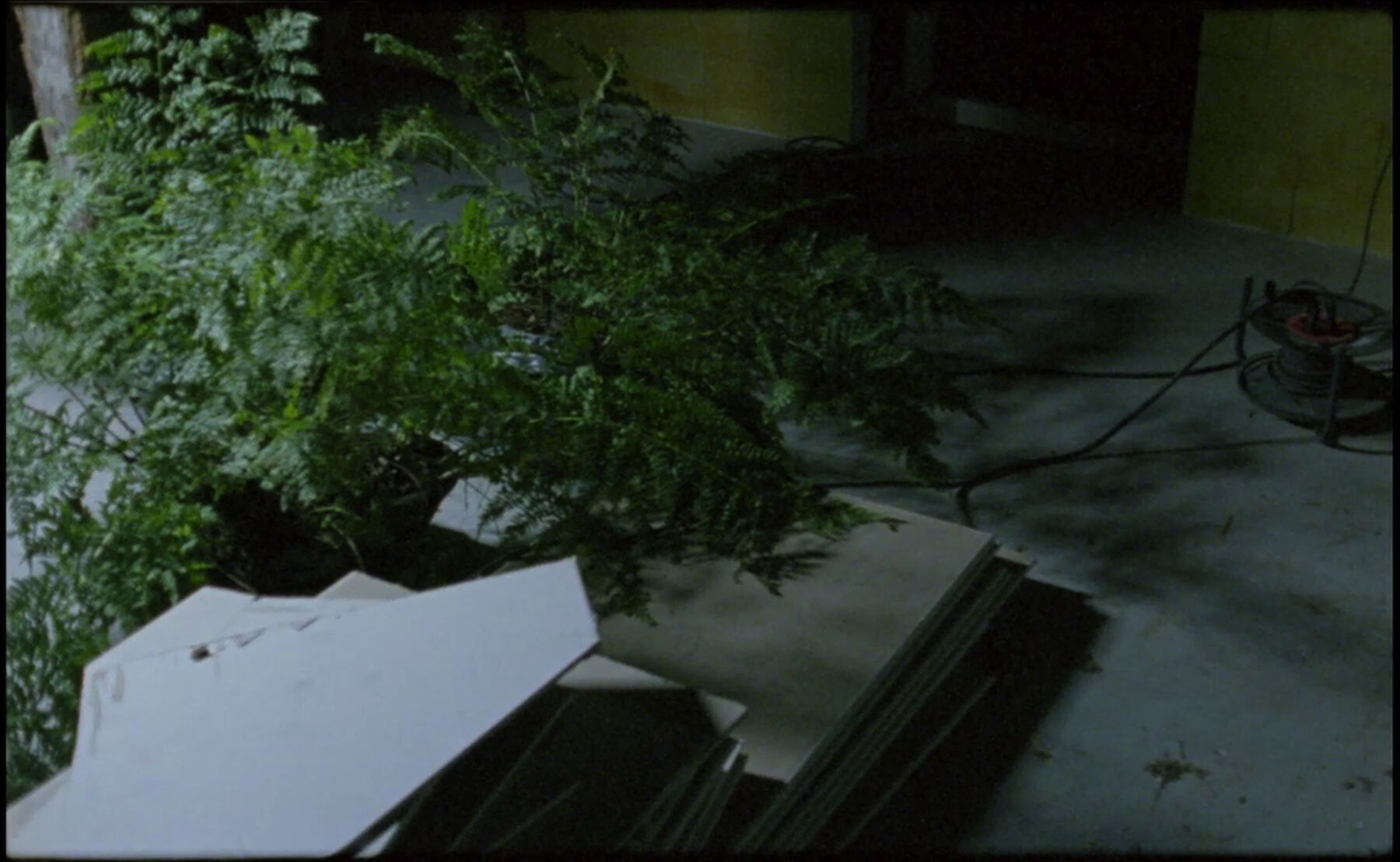
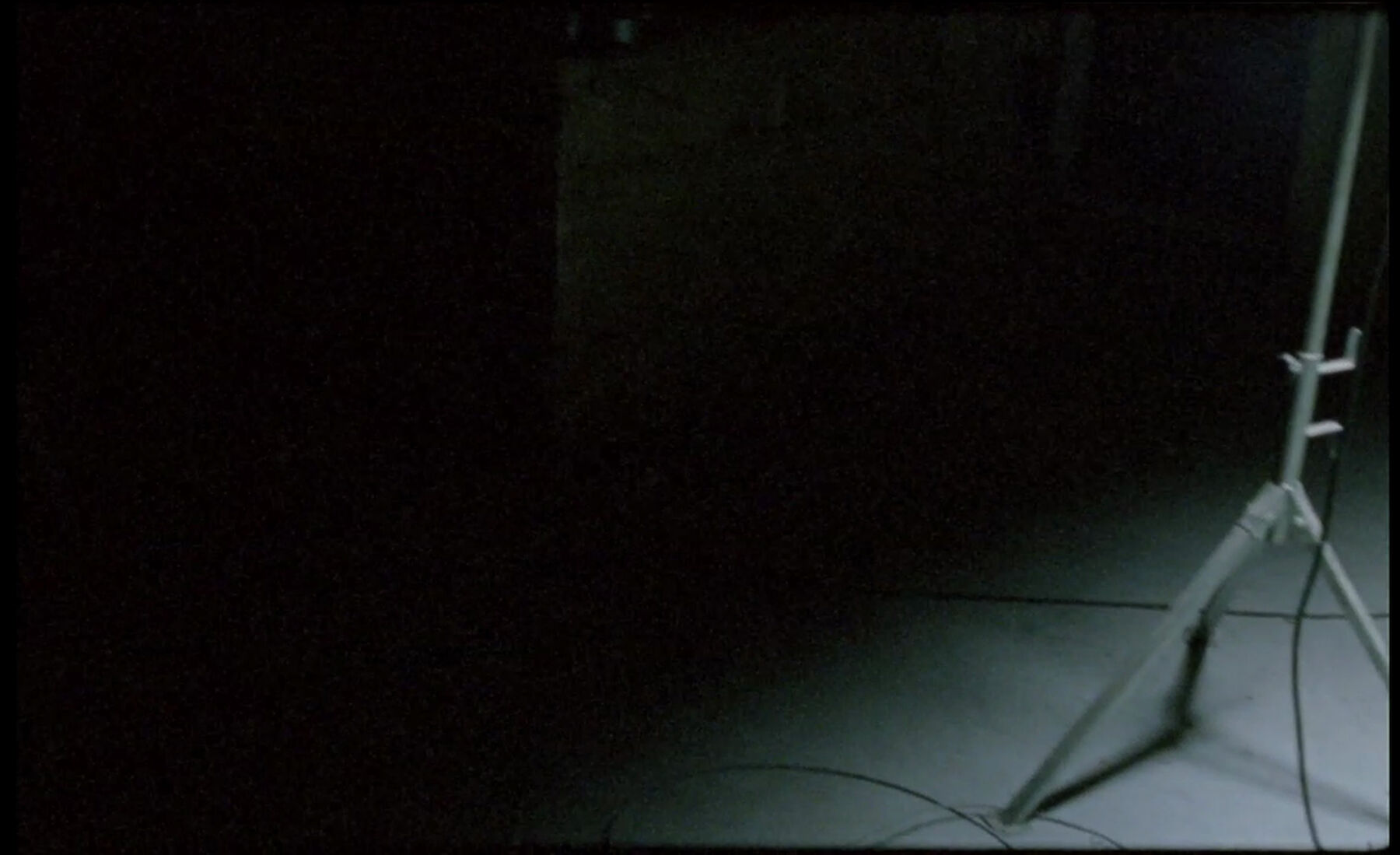
In Uit de lucht gegrepen, translated as Out of darkness, the camera moves through a brightly lit but unfinished barn. A little radio fills the space with fragments of text. Ferns lie haphazardly amidst construction materials. A man carries red sticks outside. He is merely visible from the back. The man is so deeply involved with his surrounding that he seems to become part of its speechless components. The intentions of his actions and the significance of space remain obscured, neither do we gain much information about the surroundings; outside it is dark and night. The camera moves through this darkness searching for something to hold on to while distant sounds bring the film screen to life. After a flight through this lively gloom the camera returns to the barn to recapture the moment in all its detail. To hold it, to grasp it, to fully let it sink in.
Directed by Jasper Coppes and Stijn Verhoeff
With Eelco Mur
Camera Casper Brink
Sound design Malu Peeters
Radio Zoltan Torey and Natasha Mitchell
Additional sound recording Kris Whittaker
Supported by Mondriaan Fund and
Amsterdam Fund for the Arts
Special thanks to Land Art Contemporary
Premiered at International Film Festival
Rotterdam in January 2014
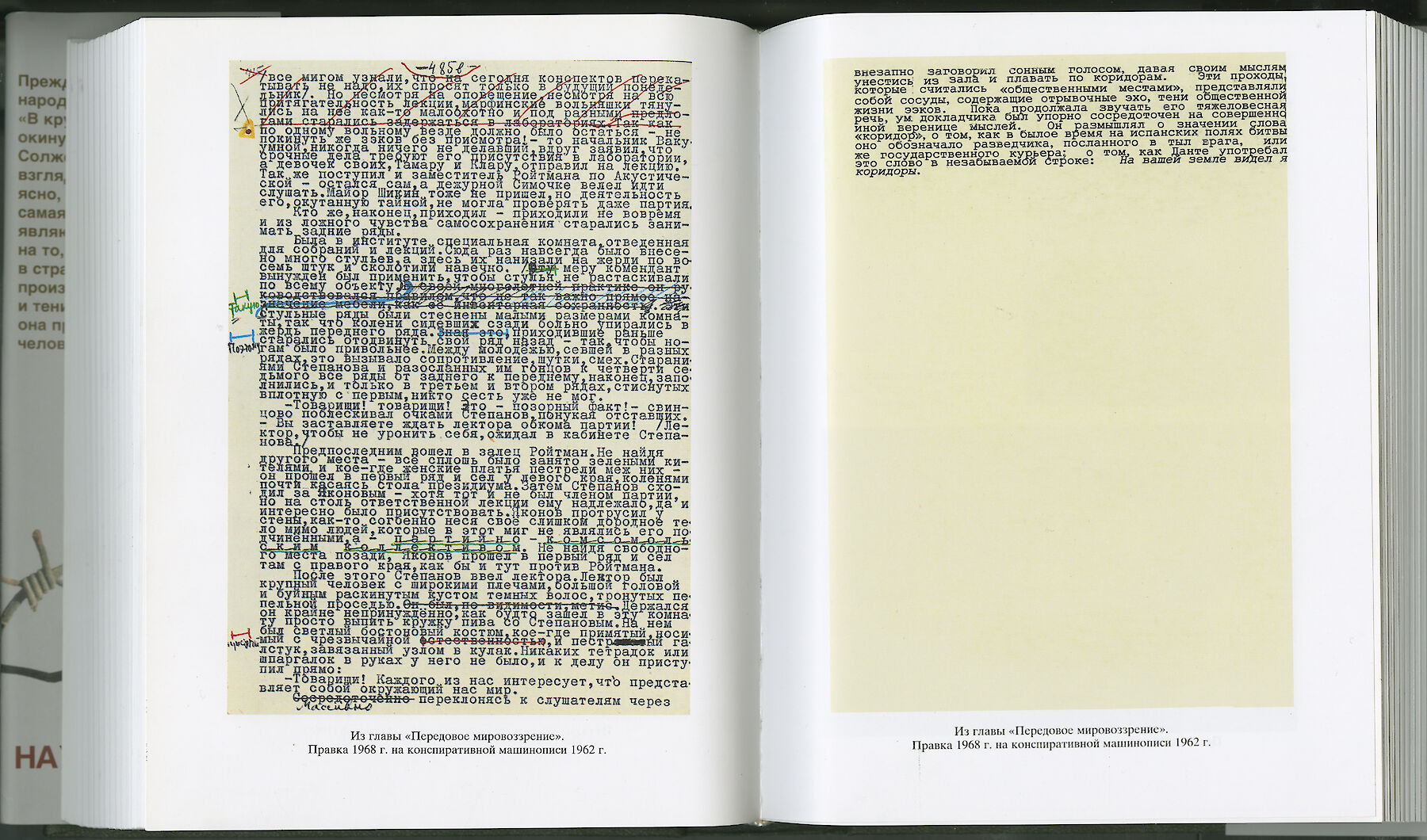
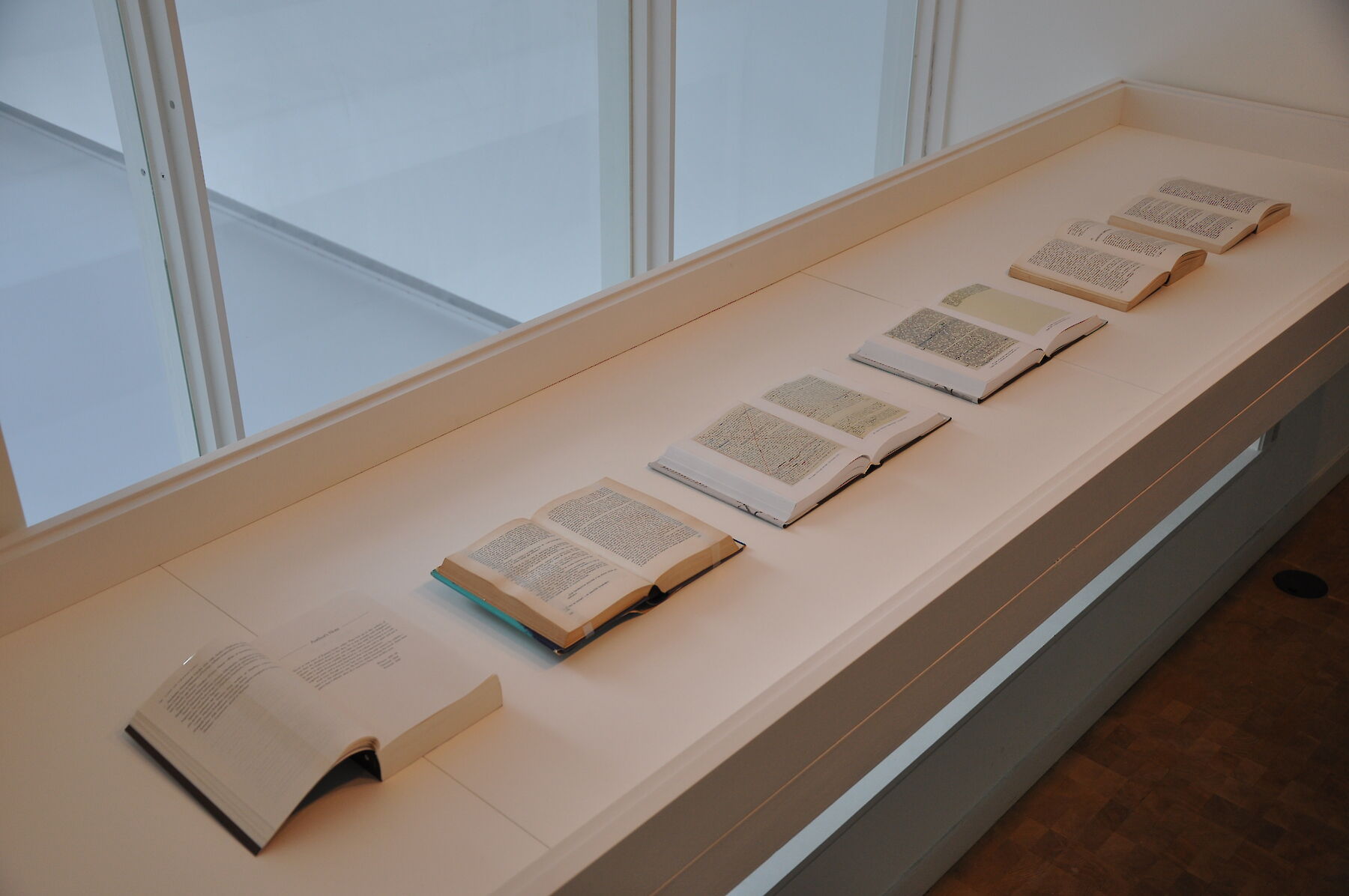
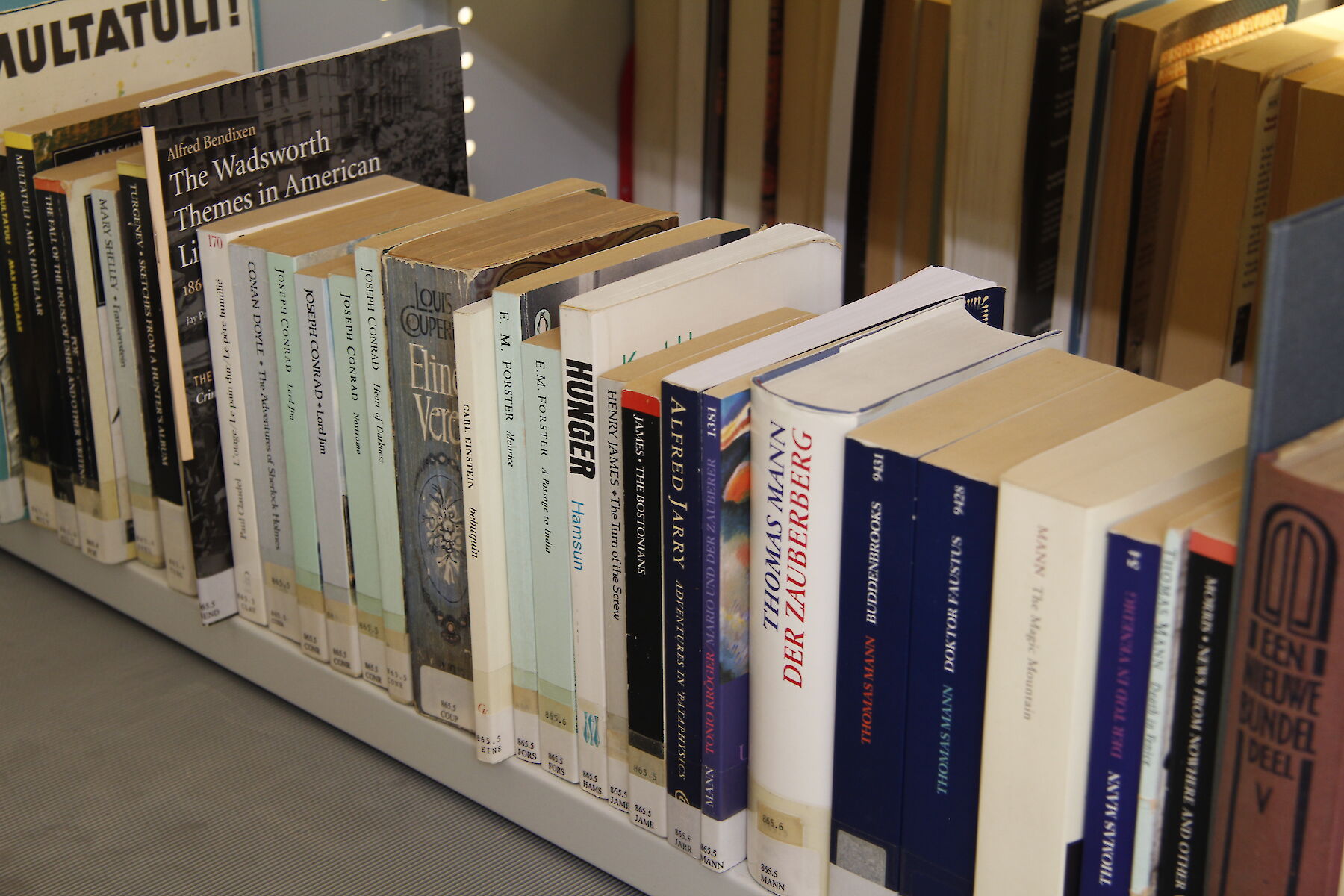
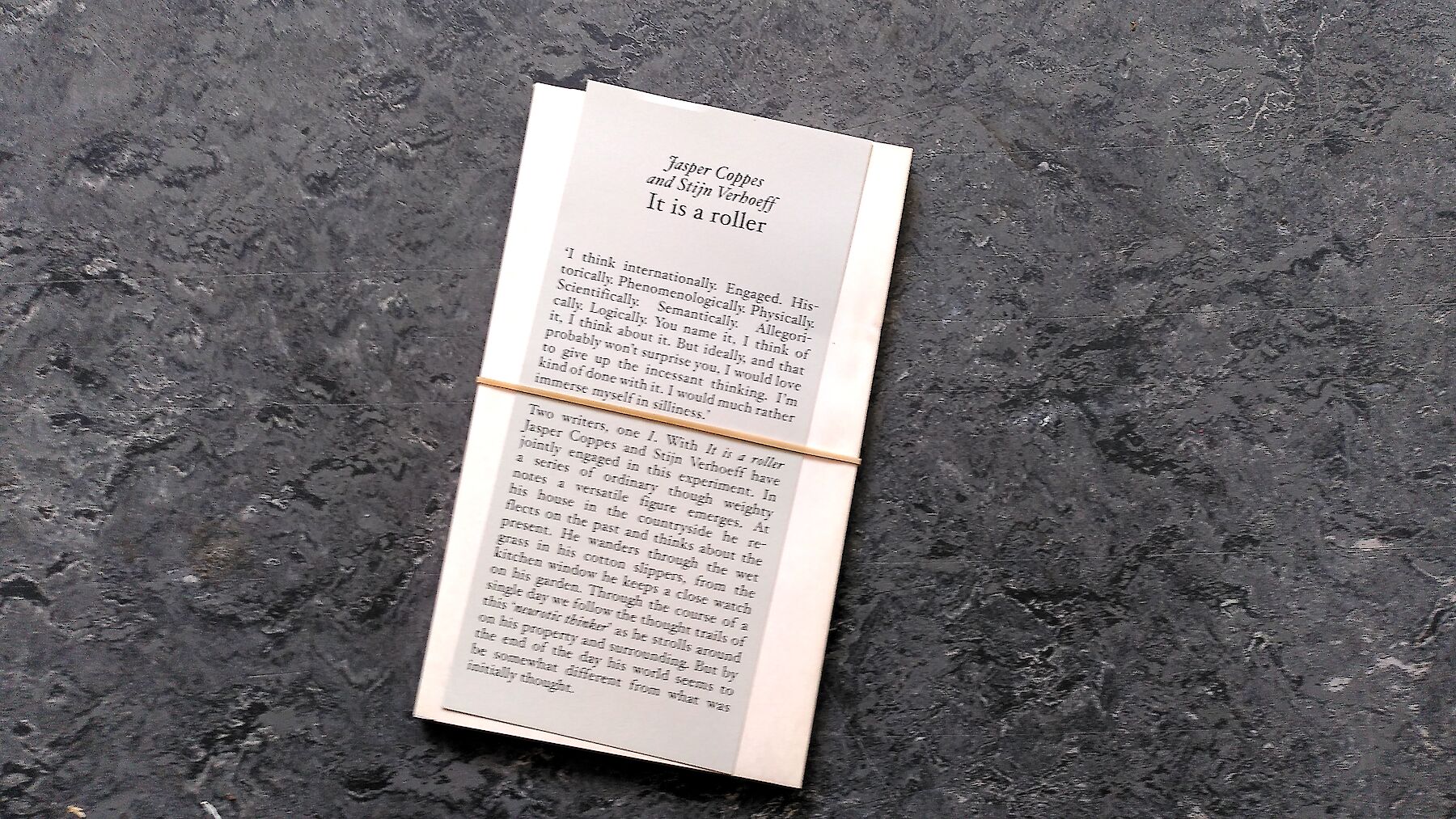
‘I think international. Historical. Phenomenological. Physical. Engaged. Scientific. Semantic. Allegoric. Logic. You name it, I think of it, I think about it. But ideally, and that probably won’t surprise you, I would love to put an end to the incessant flow of thought. I’m kind of done with it. I would much rather immerse myself in silliness.’
Two writers, one I. With Scharrelaar // It is a roller Jasper Coppes and Stijn Verhoeff have jointly engaged in this experiment. In a series of ordinary though weighty notes, a versatile figure emerges. At his house in the countryside he reflects on the past and thinks about the present. He wanders through the wet grass in his cotton slippers, from the kitchen window he keeps a close watch on his garden. Through the course of a single day we follow the thought trails of this ‘neurotic thinker’ as he strolls around on his property and surrounding. But by the end of the day his world seems to be somewhat different from what was initially thought.
Written by Jasper Coppes and Stijn Verhoeff
Design by Jasper Coppes and Stijn Verhoeff
Softcover with bookmark
75 pages, 16 x 32 cm
Text in Dutch or English
Unlimited edition
Order at j.b.coppes@gmail.com